
The Nevada, California & Oregon Railway is infamous in Nevada history.
At one time, railroads crisscrossed Nevada. Over seventy rail lines ranged from small localized to transcontinental railroads. They connected remote Nevada locations with the state and the outside world. The most famous may have been Virginia & Truckee, “The Queen of the Short Lines,” but few compare to the infamous Nevada, California, and Oregon Railway. Stories of mismanagement, herding rabbits, shootouts, and murder trails make the N-C-O one of the more colorful lines, earning it the nickname “The Northern California Outrage” and the “Narrow, Crooked and Ornery.”

Today, you can follow much of the infamous railroad’s route from Reno, Nevada, to Lakeview, Oregon.
A railroad headed where?

The Western Nevada Railroad Company, headed by John T. Davis, was founded in 1879. The original plan was to build a railway from Wadsworth south to Rhodes Salt Works, with the first section to Walker Lake.

Plans for the line changed to center in Reno instead of Wadsworth. The railroad planned to extend south to Bodie, California, north to Lakeview, Oregon, and later to the Columbia River and Klamath Falls. The company was renamed “The Nevada & Oregon Railroad Company,” the N&O in 1880. To create a new company yet have the railway effectively managed and function the same, “The” was dropped from the name in 1881, making the “Nevada & Oregon Railroad Company.”

Building the Nevada, California & Oregon Railway
Survey work for the N&O Railway began in 1880. To save construction costs, the N&O would be a narrow gauge line, meaning rails would be 3 feet apart, over a foot and a half less than standard gauge.

(Photo credit: Quora)
Construction started in Reno, with the first spike driven on May 28, 1881. By September 1882, the line extended to Oneida, California, 39 miles north of Reno. Regular service began the following month.
Investors, the Moran Brothers, purchased control of the N&O on April 17, 1884 for $372,534.21. They maintained the name, but many called it the “Nevada and California Railroad.”

(Photo credit: N-C-O Railway)
On March 31, 1888, the railroad changed its final name to the “Nevada-California-Oregon Railway,” N-C-O. The N-C-O chose to lay the rails on the east side of Honey Lake. The route bypassed Susanville, upsetting local merchants. Many opted to freight supplies from Chico instead of patronizing the N-C-O.

(Photo credit: Tim I. Purdy)
Due to financial issues, the line ended at Amedee on the east shore of Honey Lake in 1890. Construction resumed in 1899. By 1900, the N-C-O laid 50 more miles of track and reached Madeline in 1901. The expansion again stalled for five years due to financial reasons.

(Photo credit: UC Davis Library)
The N-C-O finally arrived at Alturas in 1908, 30 years after the line started.

The N-C-O reached its final destination of Lakeview, Oregon, on January 10, 1912. It took the N-C-O thirty-two years to build 238 miles of railroad from Reno to Lakeview.


End of the N-C-O
The N-C-O never extended south to Bodie or Rhodes. In 1915, it assumed the Sierra & Mowkah line, increasing it to 275 miles, making it one of the longest narrow gauge railroads.
The Nevada, California & Oregon Railway mainline operated for only six years. The Western Pacific Railway purchased the southernmost 130 miles on June 11, 1917. The Southern Pacific Railroad purchased the N-C-O in October of 1926. They converted to a standard gauge railroad, selling much of the N-C-O stock to other lines. The N-C-O relocated their headquarters to Alturas.

Today, two sections of the N-C-O remain in use by Union Pacific, and the Goose Lake Railway runs routinely from Lakeview to Alturas.
Dueling Boards and a shootout
A major cause of slow progress was infighting within the company. Col. Moore was hired as the construction supervisor. In early 1880, Moore said construction would begin as soon as the railway had $100,000 in stock. Construction began on December 22 despite not having the funds. On February 21, 1881, contractor Knox stopped all work and filed a lien against the railroad for non-payment. In April, Moore procured funds and supplies to resume construction. During this period, local businessmen planned to take over the construction of the N&O line.
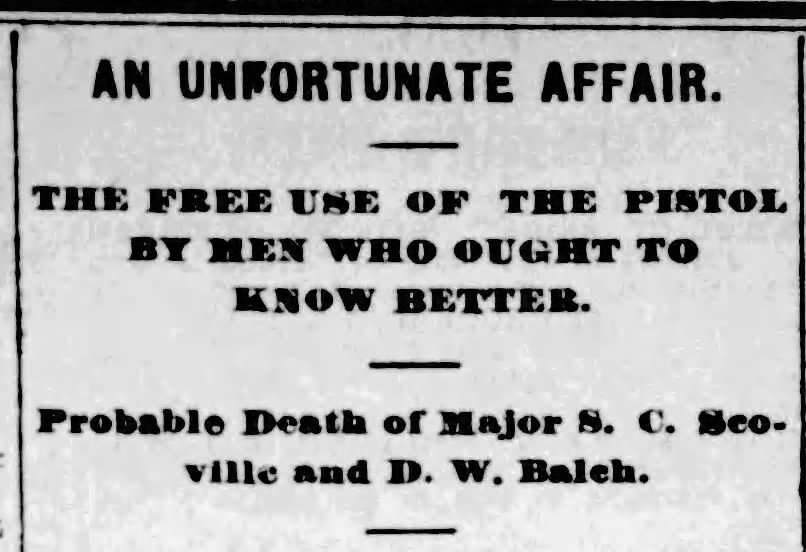
Despite the progress of 10 miles of rail and twenty miles of grading, the board of directors was unhappy with Moore. Moore and investor Fowler were conversely unhappy with the board and their lack of bylaws. Moore and Fowler scheduled a stockholder meeting for September 27, 1881, to elect a new board of directors.
The existing board of directors wasn’t happy about losing control of the N&O. The board scheduled a meeting on September 15, voting to give each member 12,500 stock shares with no payment. The additional shares would allow them to control the stockholders’ meetings. Moore received an injunction to disallow the stock shares at the meeting, but the incumbent board also received a court order allowing the shares.

The meeting was called to order, but a group of laborers stormed into the hall demanding pay for their unpaid wages. Chaos ensued, and shots rang out, injuring two men. Daniel Blach was shot in the lung and company secretary Squire Scoville the stomach. Blach recovered and went on to become the president of the N&O, but Scoville was not so fortunate; he died a week later.
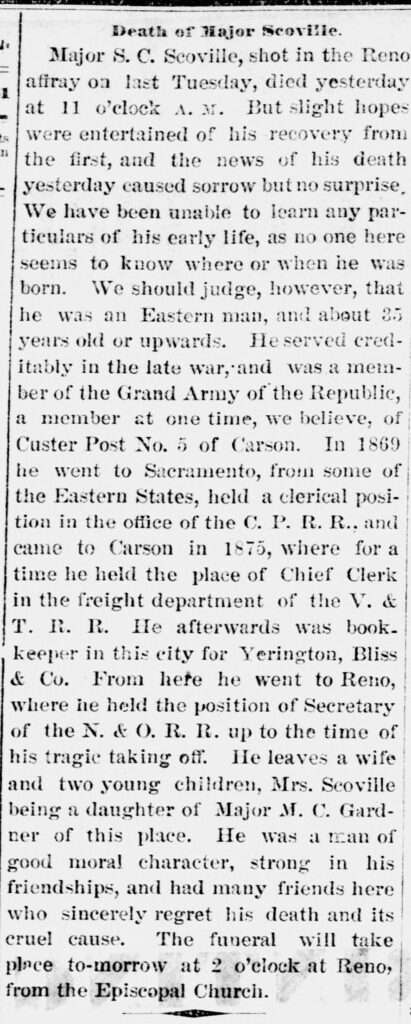
The N&O shooting trial
At the preliminary trial, the Grand Jury refused to indict those involved in the shooting. The San Fransisco Post editorialized this as understandable because in their view, Nevada would not punish murders.
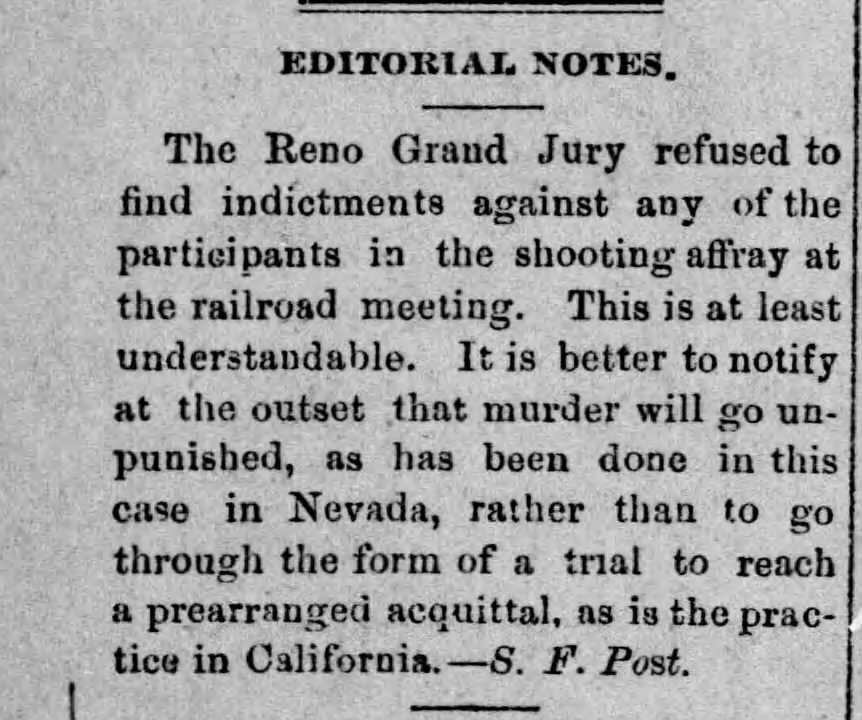
The trial was significant in Nevada history; it was the first time a typewriter was used to transcribe a trial.
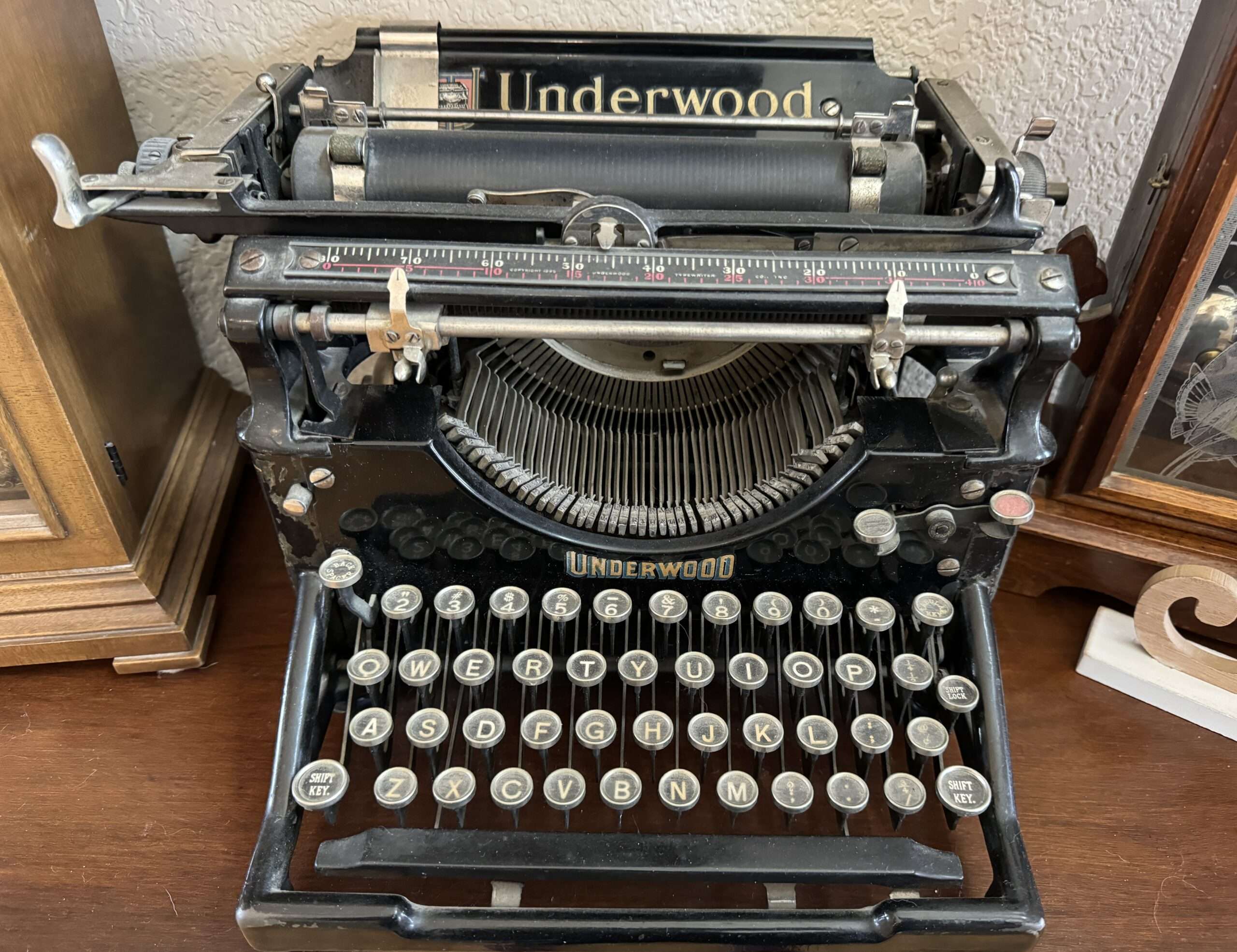
Following the Nevada, California, & Oregon Railway today
The route starts at the Reno passenger depot and runs north to Lakeview, Oregon. It runs approximately parallel to Highway 395.
Reno Depot

(Photo credit: UNR)
The first N-C-O depot was located at Plaza and Lake Street.

Frederic DeLongchamps designed the beautiful Reno N-C-O depot, constructed in 1910. The locomotive house, built in 1889, is the oldest remaining engine house in the state. The depot served railroad travelers until 1937.
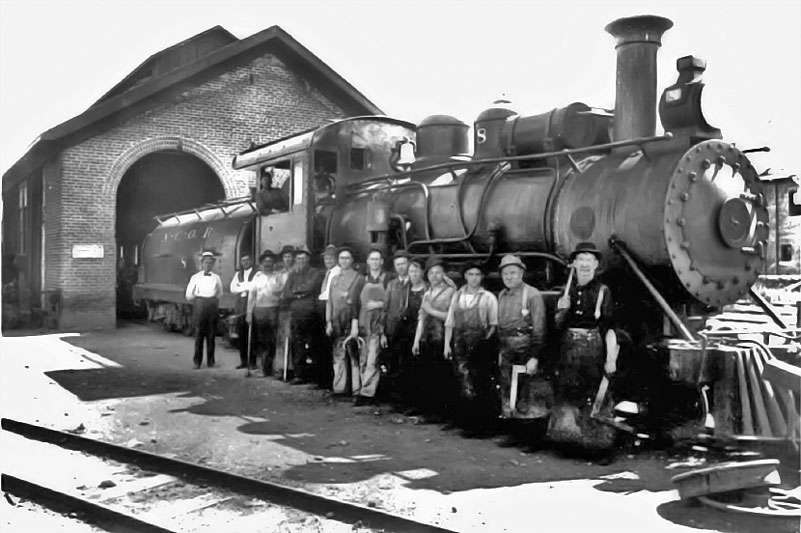
(Photo credit: Noe Hill)
Today, the N-C-O Depot is the Depot Brewery and Distillery.
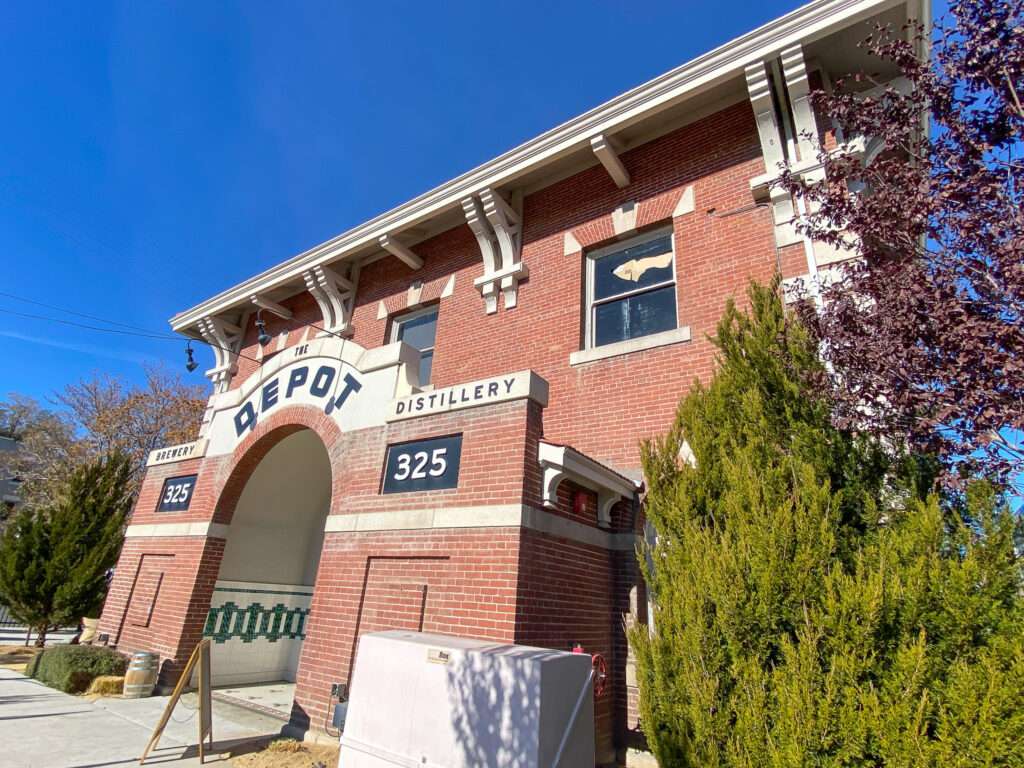
(Today, The Depot)
You can enjoy a meal with the adult beverage of your choice.


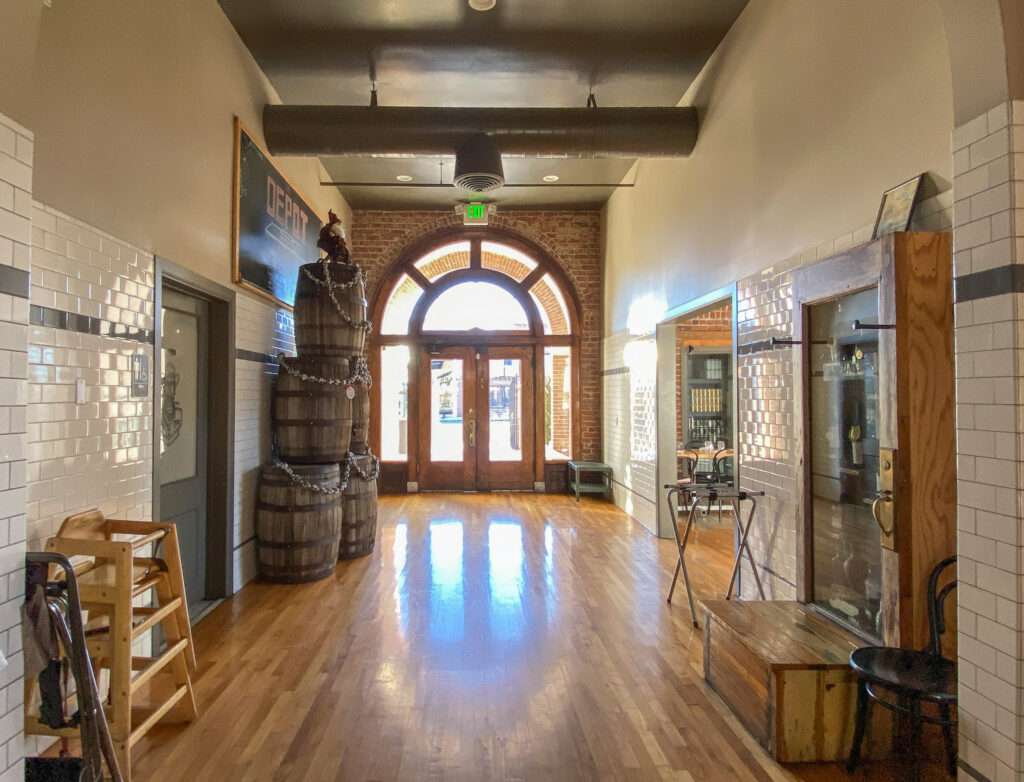
Doyle
The N-C-O reached Doyle on June 6, 1888.
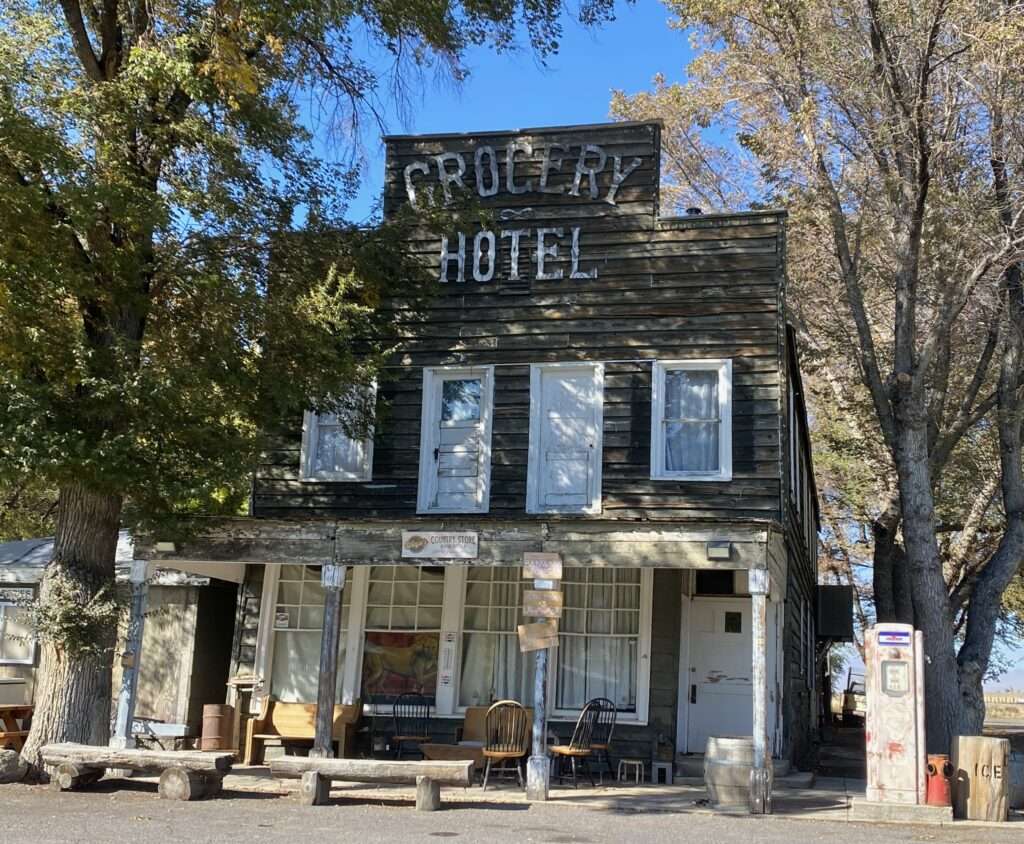
Doyle was settled in the 1870s. It was named in honor of Oscar Doyle, who donated land for the town.

Henry Butters purchased the Albert E. Ross ranch in Long Valley and added a church around 1898. Within a few years, they named it St. Mary’s Chapel Constantia. Catholic services were held until 1920 when priests were available. In 1994, it was relocated to its current location in Doyle, next to the cemetery.
AMEDEE
The N-C-O arrived in Amedee in 1890. Amedee was named after Amedee Depau Moran, one of the owners of the N-C-O.

(Photo credit: UC Davis Library)
While nothing marks the town now, Amedee once competed with Susanville. The town was considered the county seat following a disastrous fire in Susanville in 1893. Between the 1890s and early 1900s, it was a main shipping center for ranchers and dairymen, with railroads and steamboats across Honey Lake. Amedee was also a destination town with hot springs, saloons, gambling, and outdoor recreation, including paddle boats on Honey Lake. A post office operated from 1890 to 1924.

(Photo credit: Lassen Historical Society)
Amedee Kiln
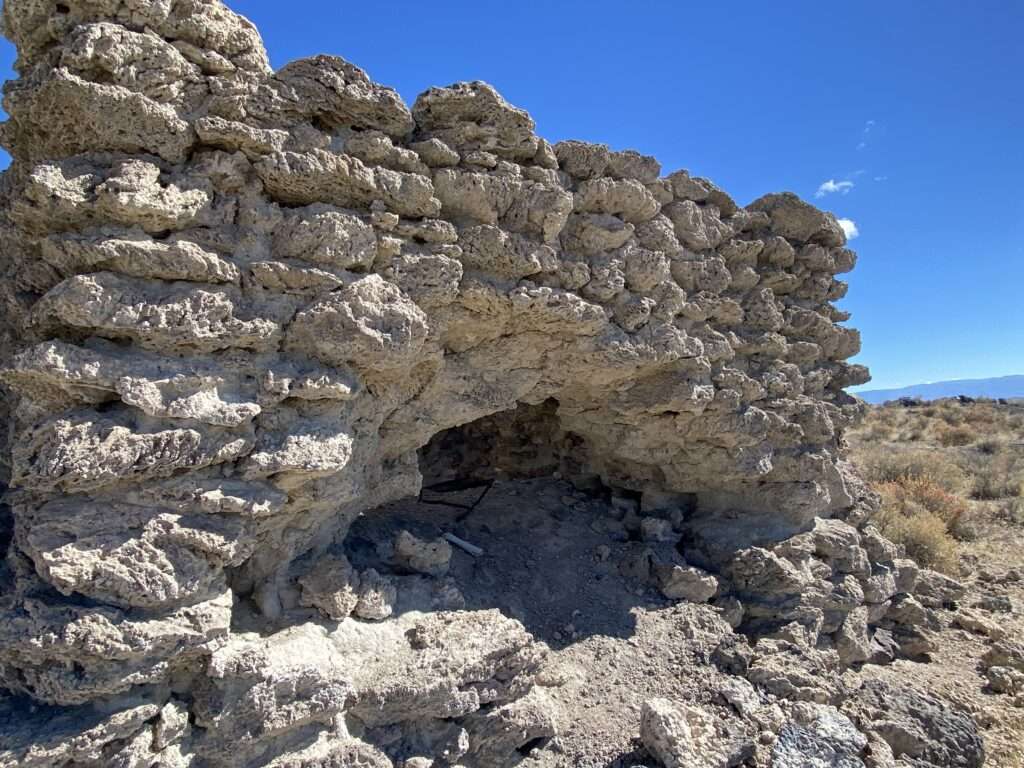
Lime is extracted from stones such as limestone and travertine. The ore must be baked in a kiln to extract the lime.
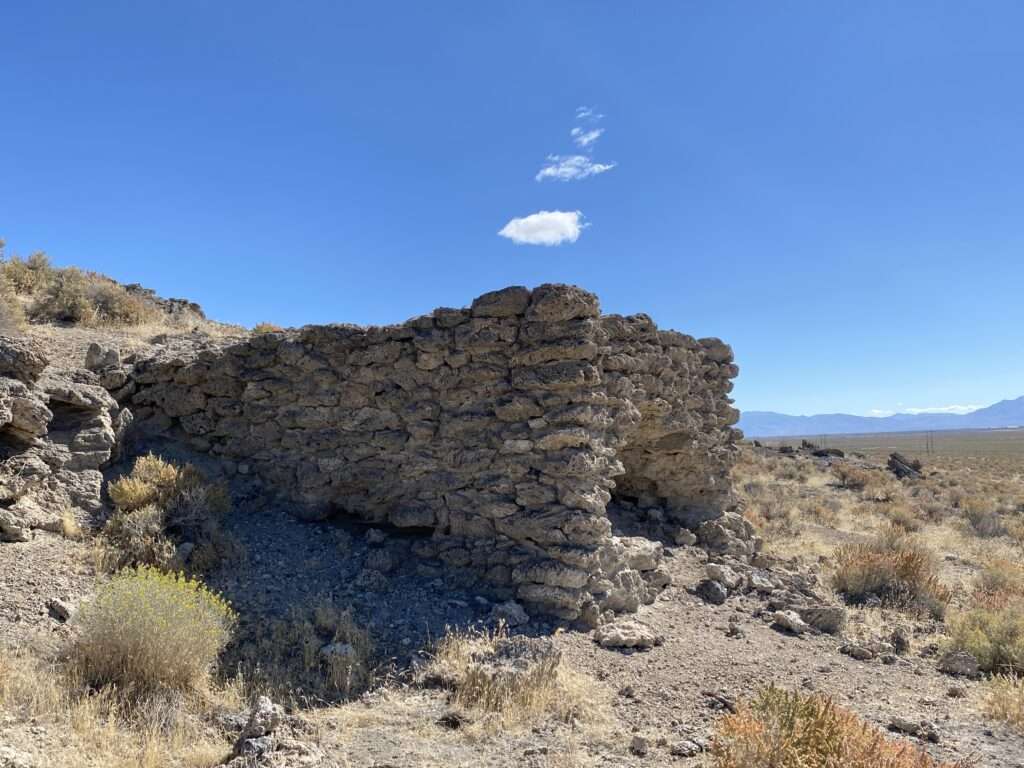
In the early 1890s, the Amedee Lime Works shipped limestone on the N-C-O to Reno for processing. In 1893, Charley Falding constructed a stone kiln and Amedee to process the lime on site. Miners worked into the 1920s, but despite the high quality of the stone, remoteness and shipping costs doomed the Amedee Kiln.
Wendel, California

The town of Wendel may have changed names more than any. In chronological order, the settlement went by Upper Hot Springs, Schaeffer Hot Springs, Smithon, Boyd, Hot Springs Station, Purser, Antola, Caloreta, and Wendel.

Just as the town of Wendel had many names, several towns had the name Wendel. Wendel in Lake County, Oregon, was a stop on the N-C-O for a brief time. Both towns were named after the friend of Thomas Moran, the President of the N-C-O. He must have been a big investor to have two towns named in his honor.

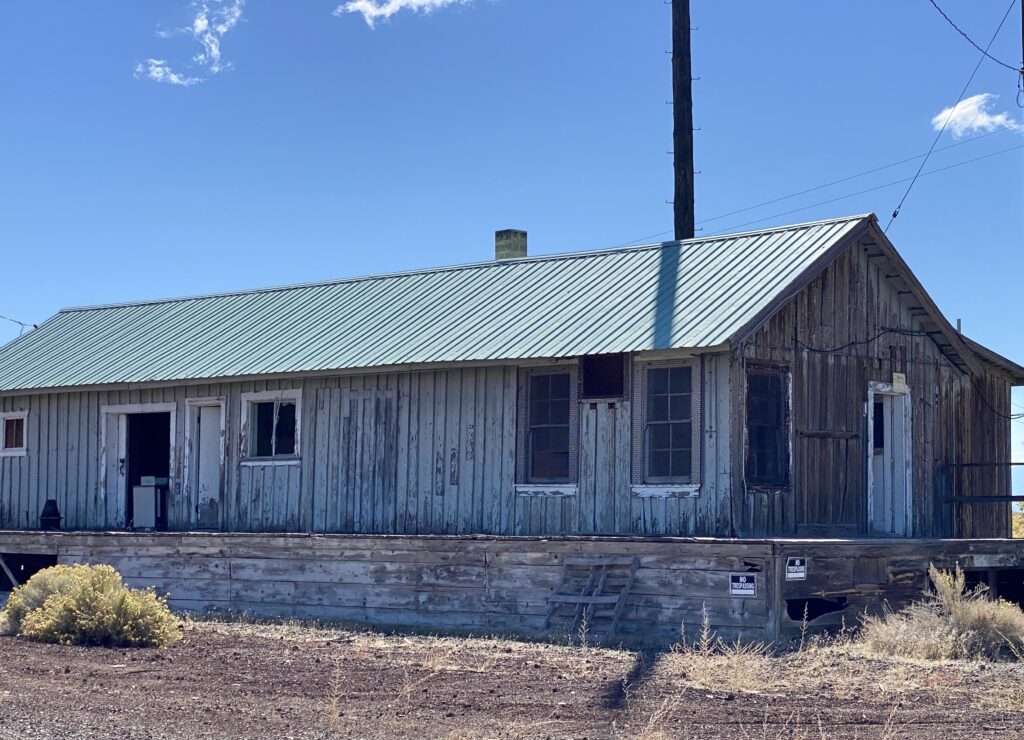
Wendel was an important station. It was the junction of the Susanville branch and where crews changed. The town had an engine house, a water tower, and a powerhouse. In March 1913, Fernley & Lassen Railway crossed the N-C-O at Wendel, Calif.

The post office closed on December 3, 1993, and the rails were removed except where they were embedded in the road.
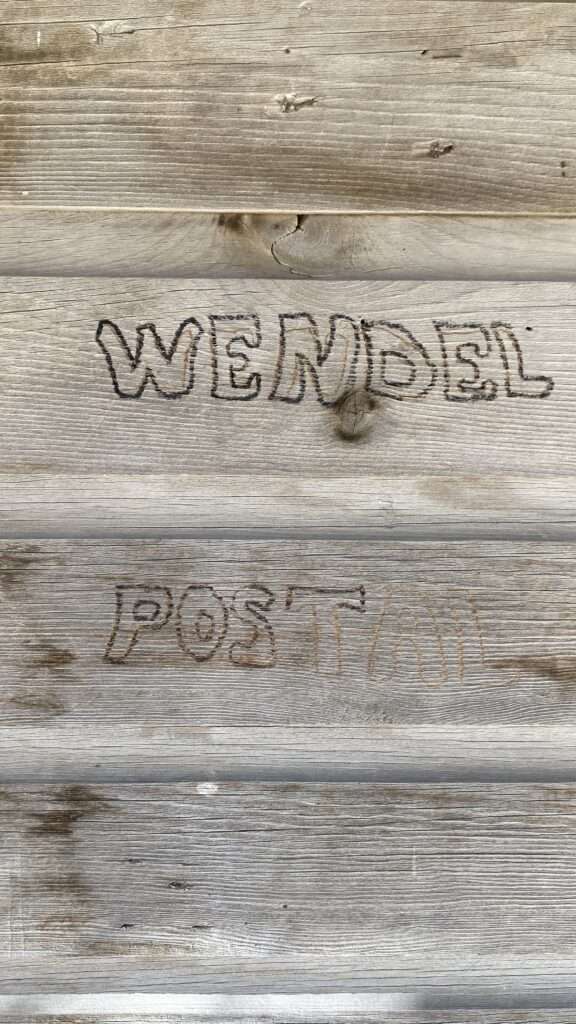

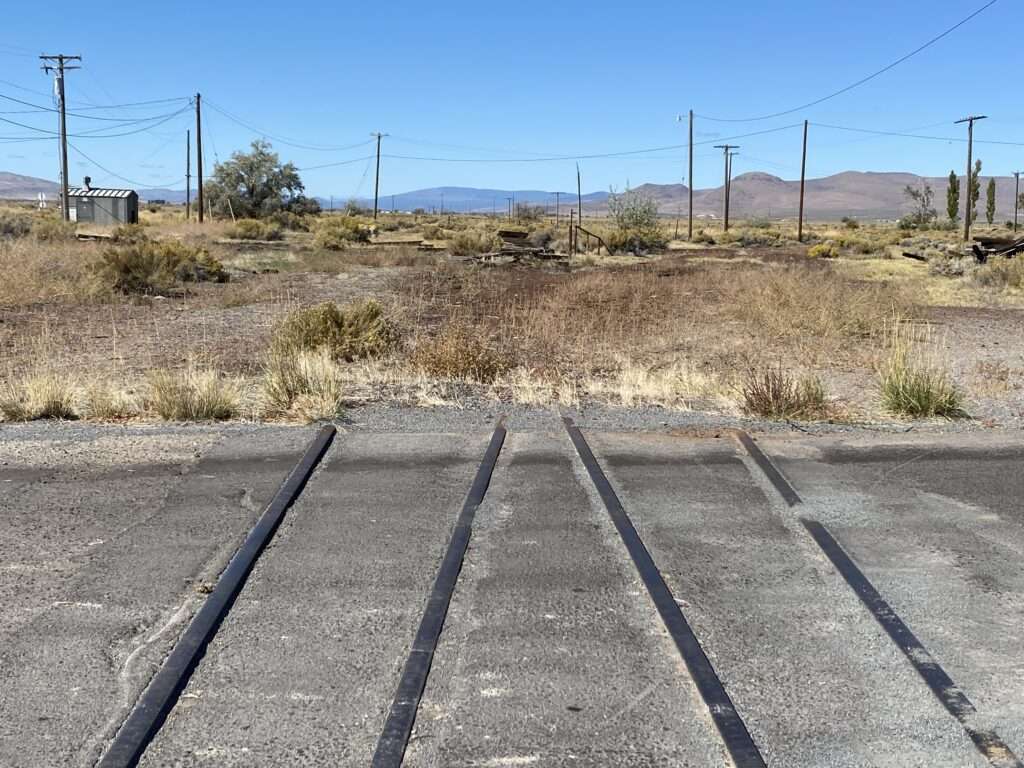
RAVENDALE
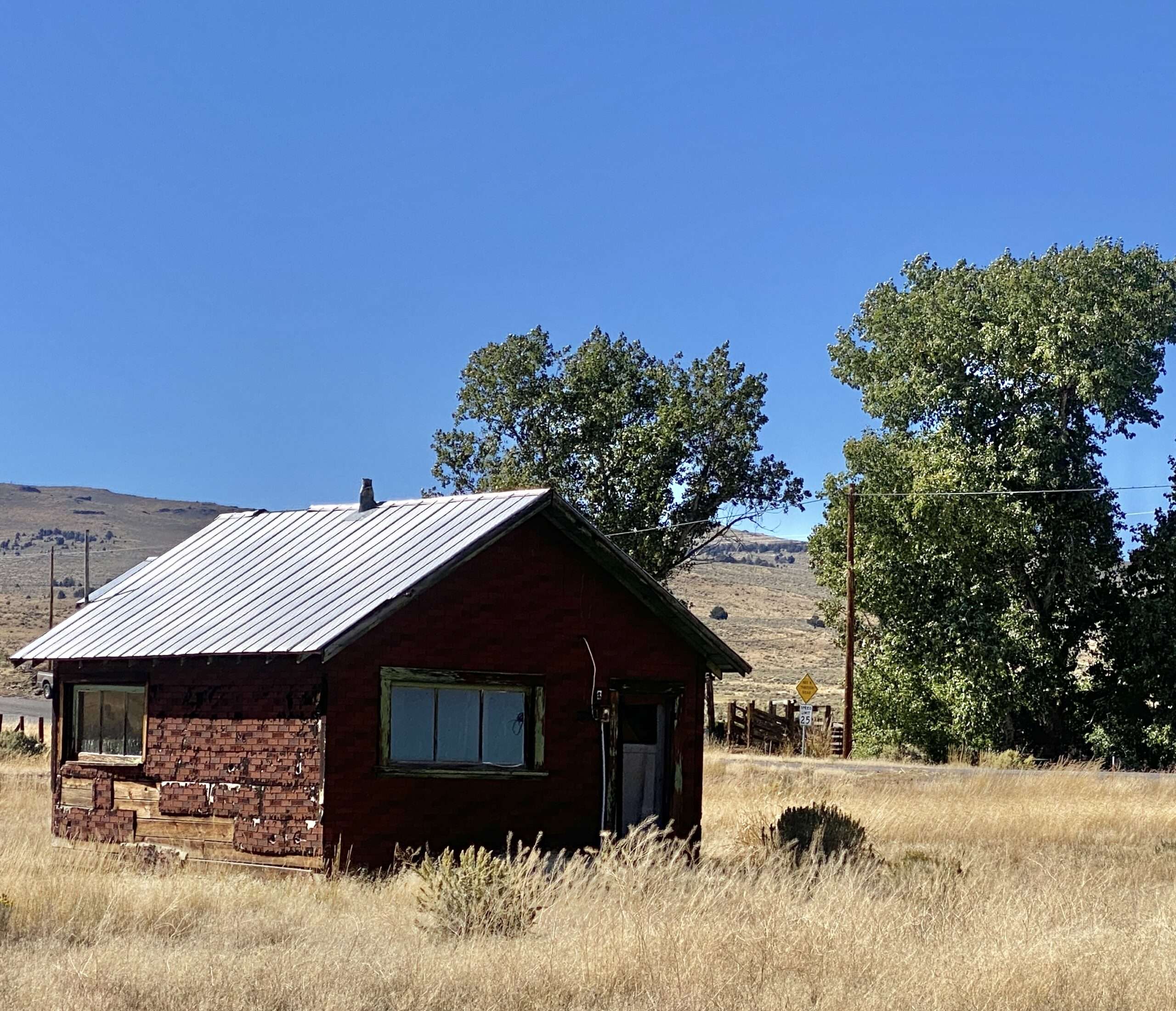
The N-C-O encouraged Russian families to settle in the area around Ravendale. In the winter, rabbit drives occurred. The bunnies were loaded onto the N-C-O and transported to a tamale factory in San Francisco. The Russians either got tired of eating rabbit meat or got tired of herding the fluffy hoppers and headed to greener pastures.
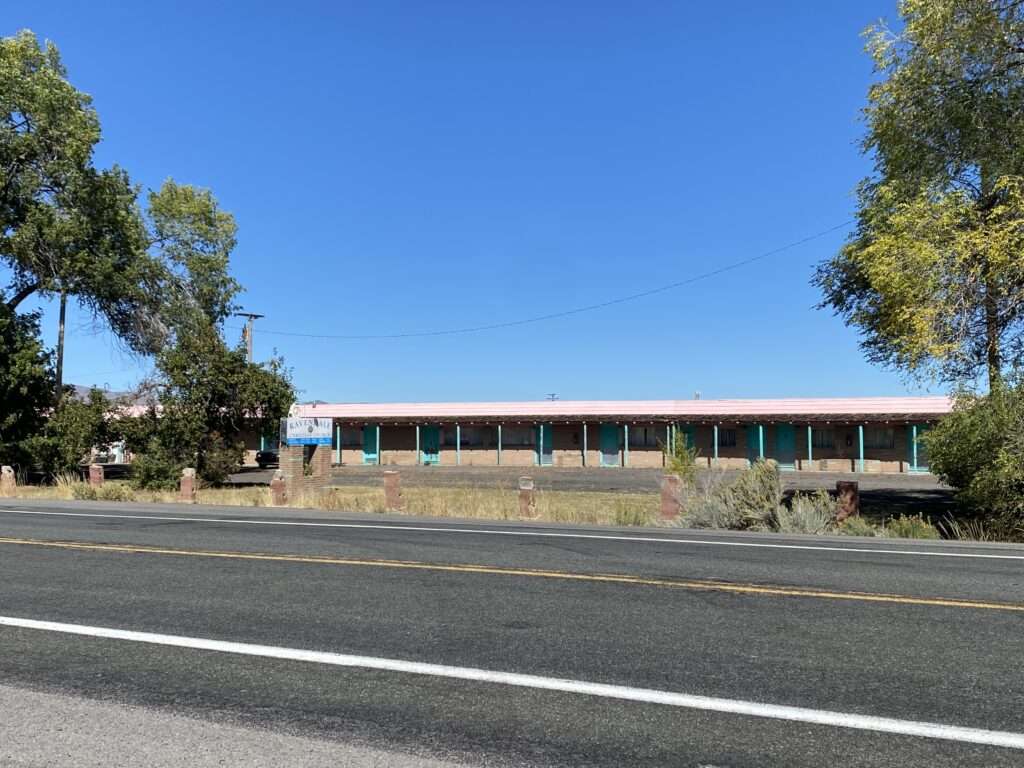
Ravendale was named after the significant number of ravens in the area. It had a post office from 1910 to 1920. And again in 1921. Student attendance at Ravendale Elementary declined to zero in 1939. The school trustees questioned if they needed to continue paying the teacher’s salary; the California Attorney General decided the issue, and yes, they had to pay the teacher.

The Ravendale motel operated in the 1950s. The Ravendale Christian Church now resides in the old hotel rooms. It is not a welcoming-looking church with offers to join the Sunday service.
TERMO
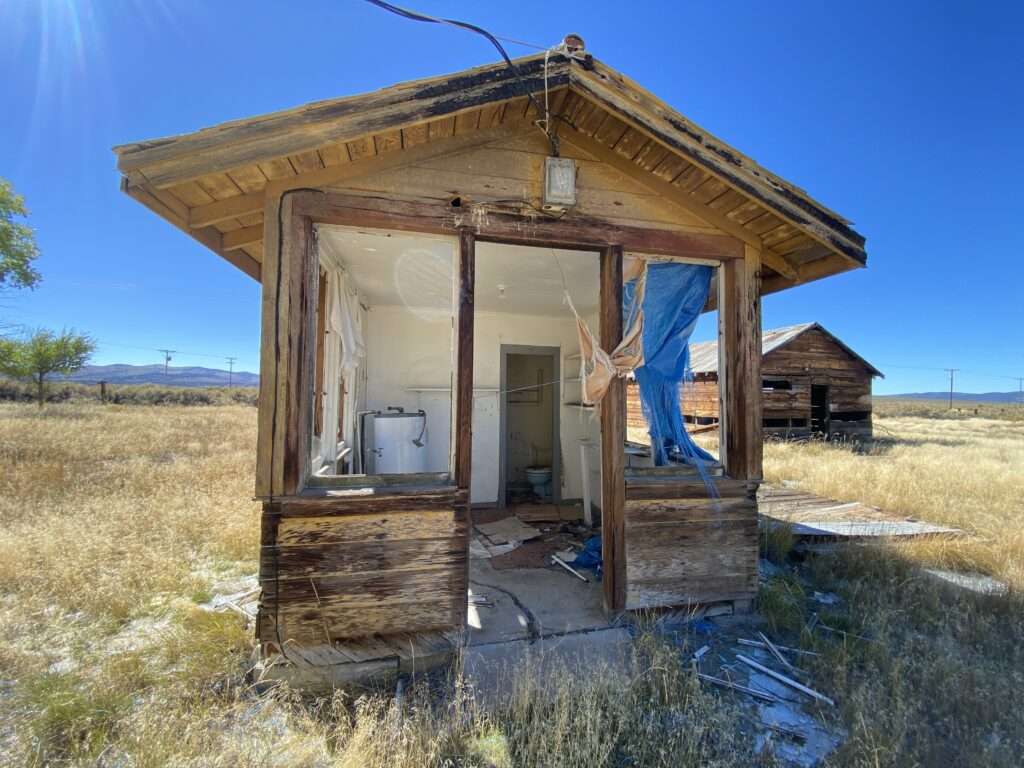
Termo was the terminus of the N-C-O in 1900; thus, it is an unusual name. A post office was opened in 1908. The town consisted of a freight house, barns and cottages. The freight house was huge at 178′ x 48′ and considered a “$50,000 folly on the desert.”
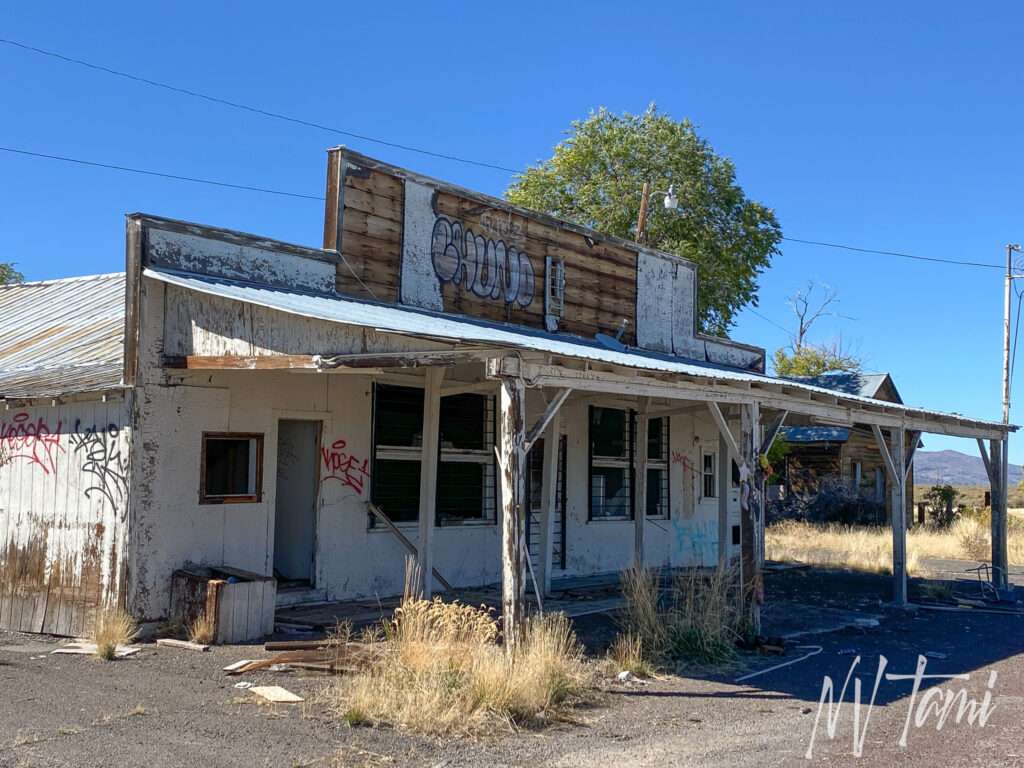
On June 1, 1900, the first train arrived at Termo. Stages met passengers to take them to Alturas.
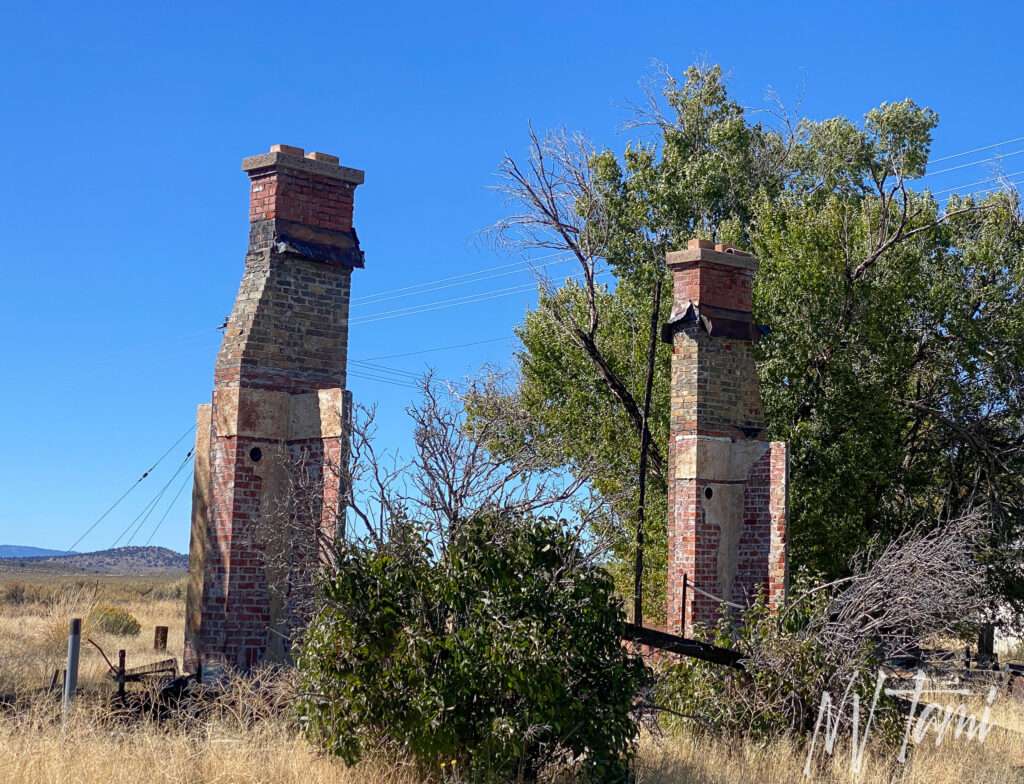
Once the N-C-O line extended to Madeline, then Lakeview, Termo became a ghost town.

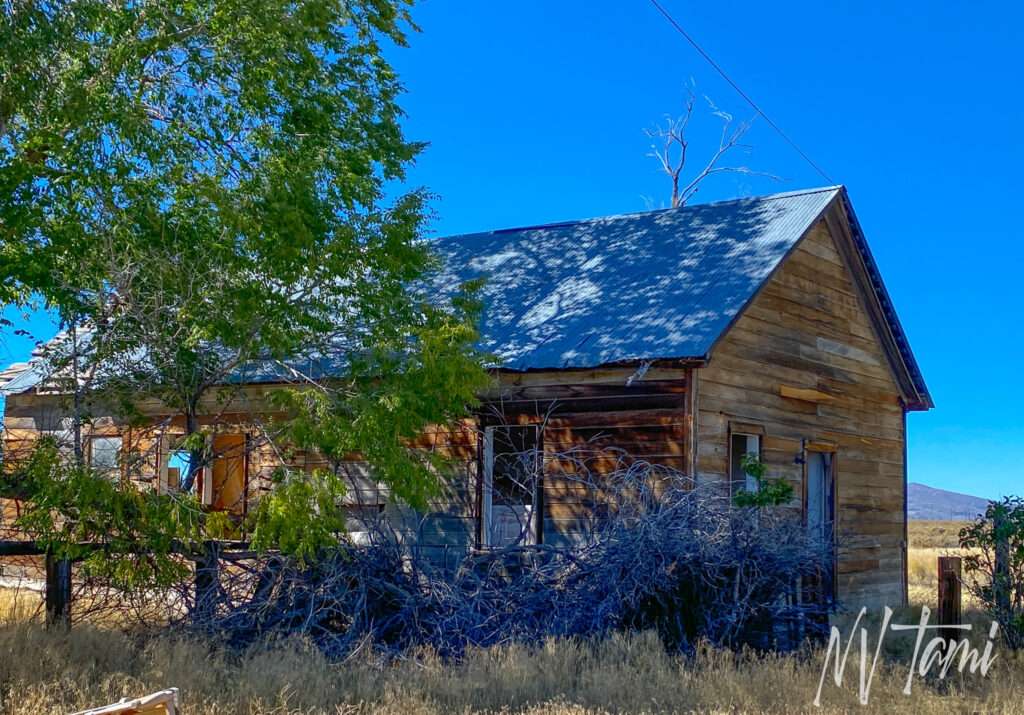
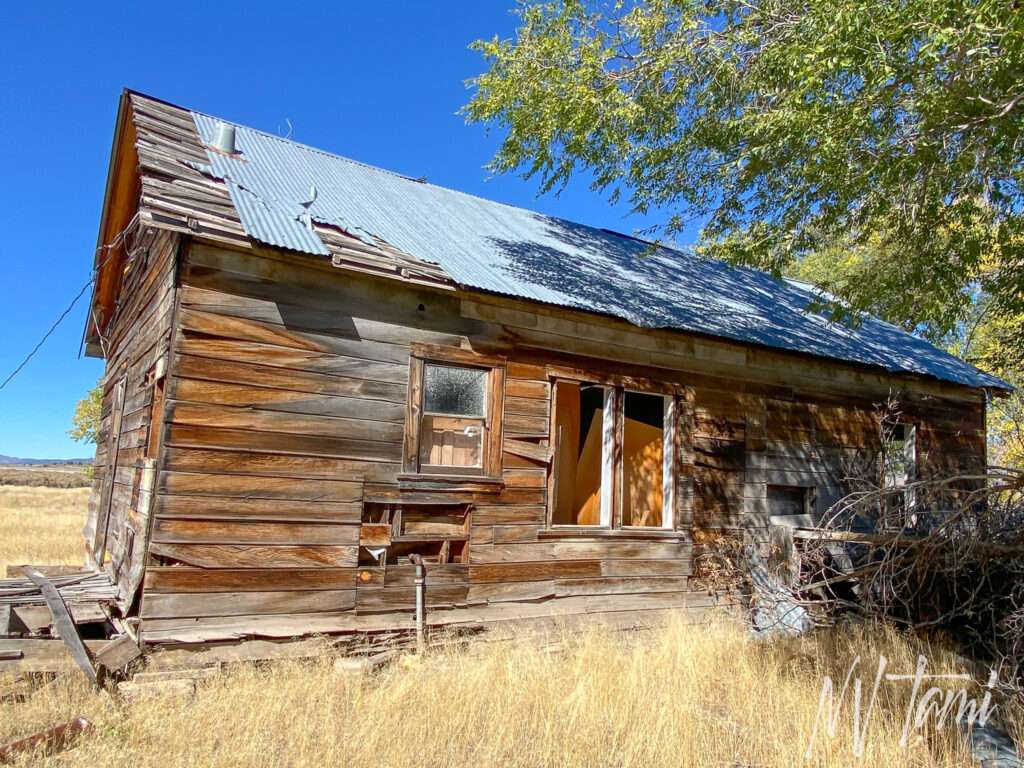
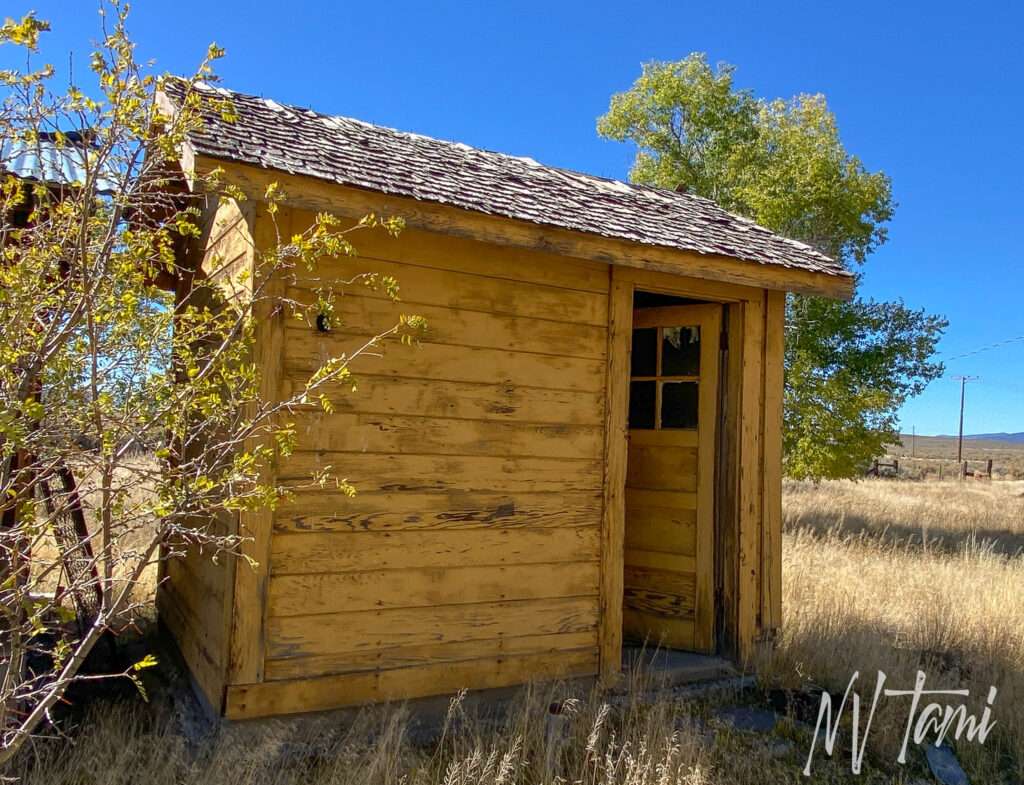
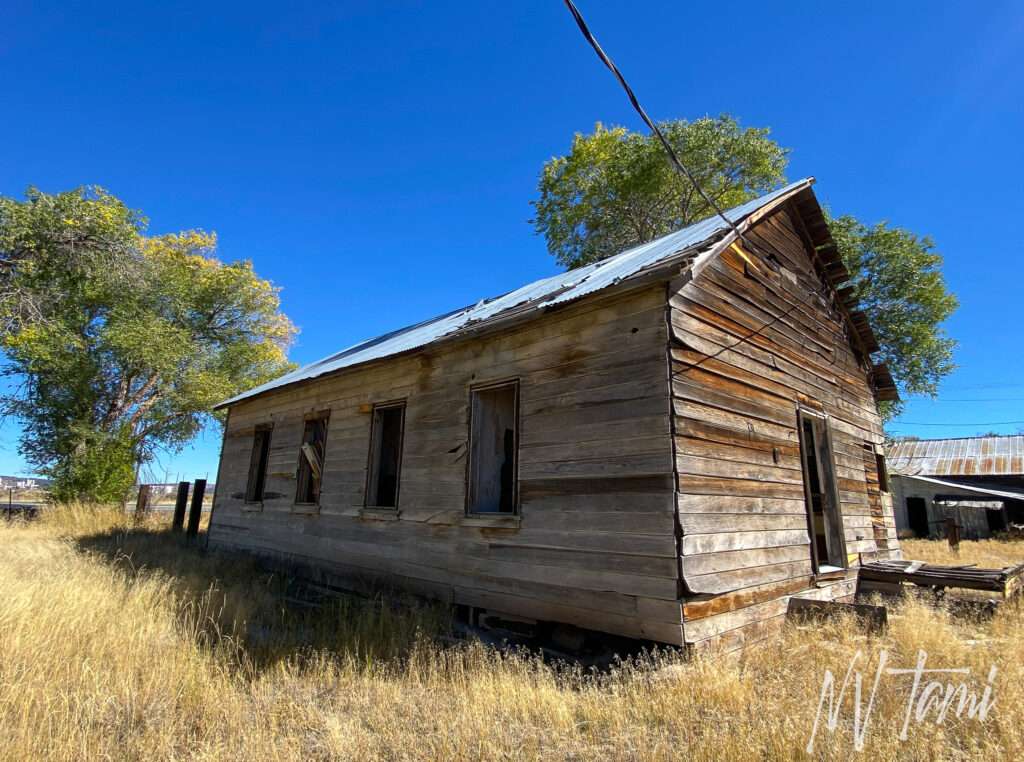
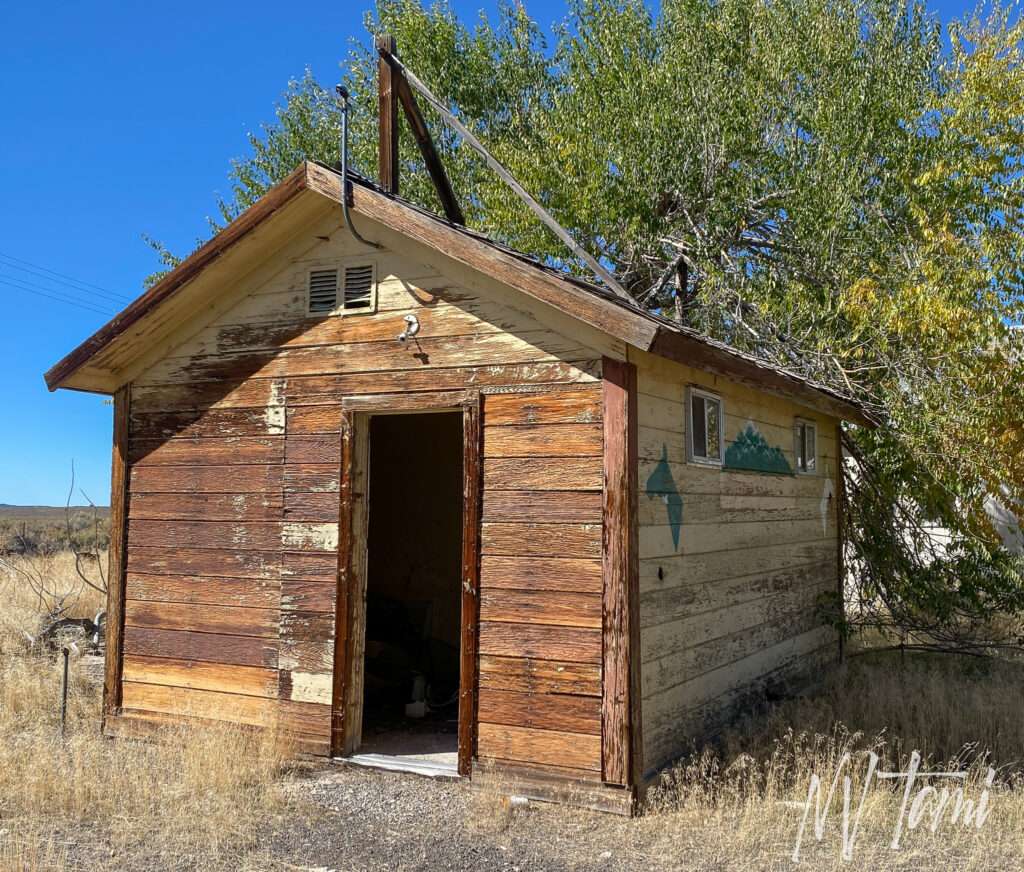
MADELINE
Madeline was a stop on the N-C-O beginning on April 1, 1902. The stop was active as a livestock shipping center.
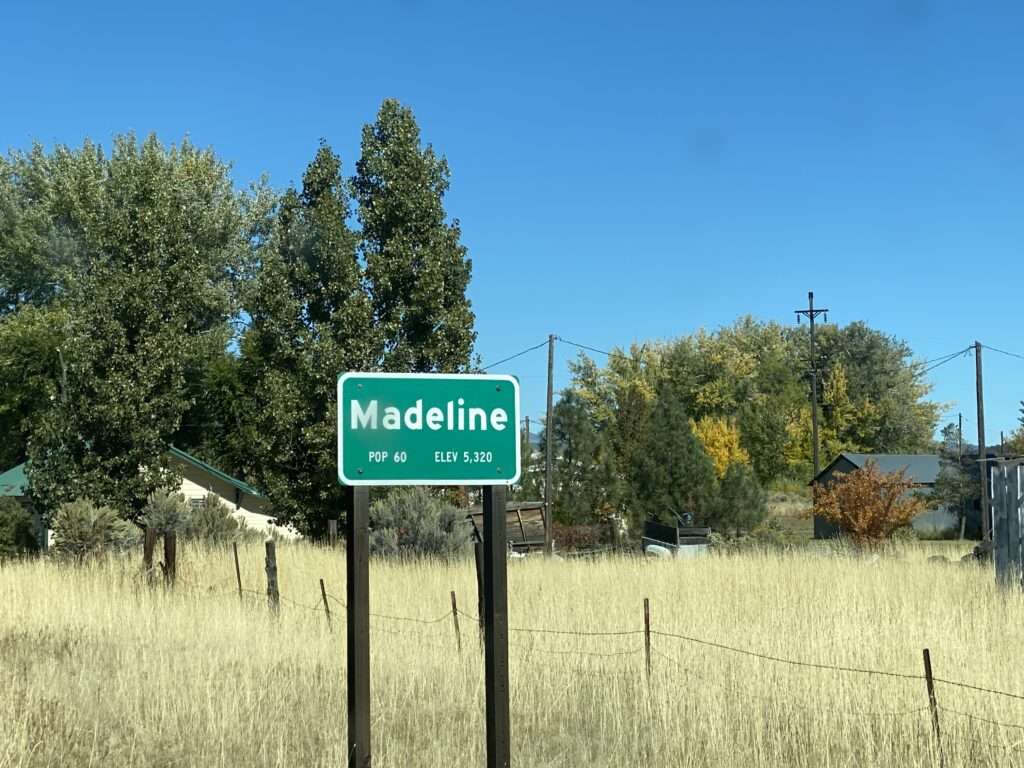
Madeline Meadows, Land & Irrigation Company, tried to develop the town—the advertised pictures of the town depicted orange trees growing along the irrigation ditches. Having lived not too far from Madeline, I think they did some creative photo editing because citrus trees would never survive the winters.

A post office opened and closed multiple times, 1875 to 1878, 1879 to 1882, and 1187 and 1902.
Likely
Northward progress was slow due to elevation changes. The N-C-O arrived at Likely on October 1, 1907.

Residents could not agree on the name of their new town. A rancher mentioned the townsfolk would likely never agree on a name. Some humorous soul suggested they name the town Likely; the rest is history.
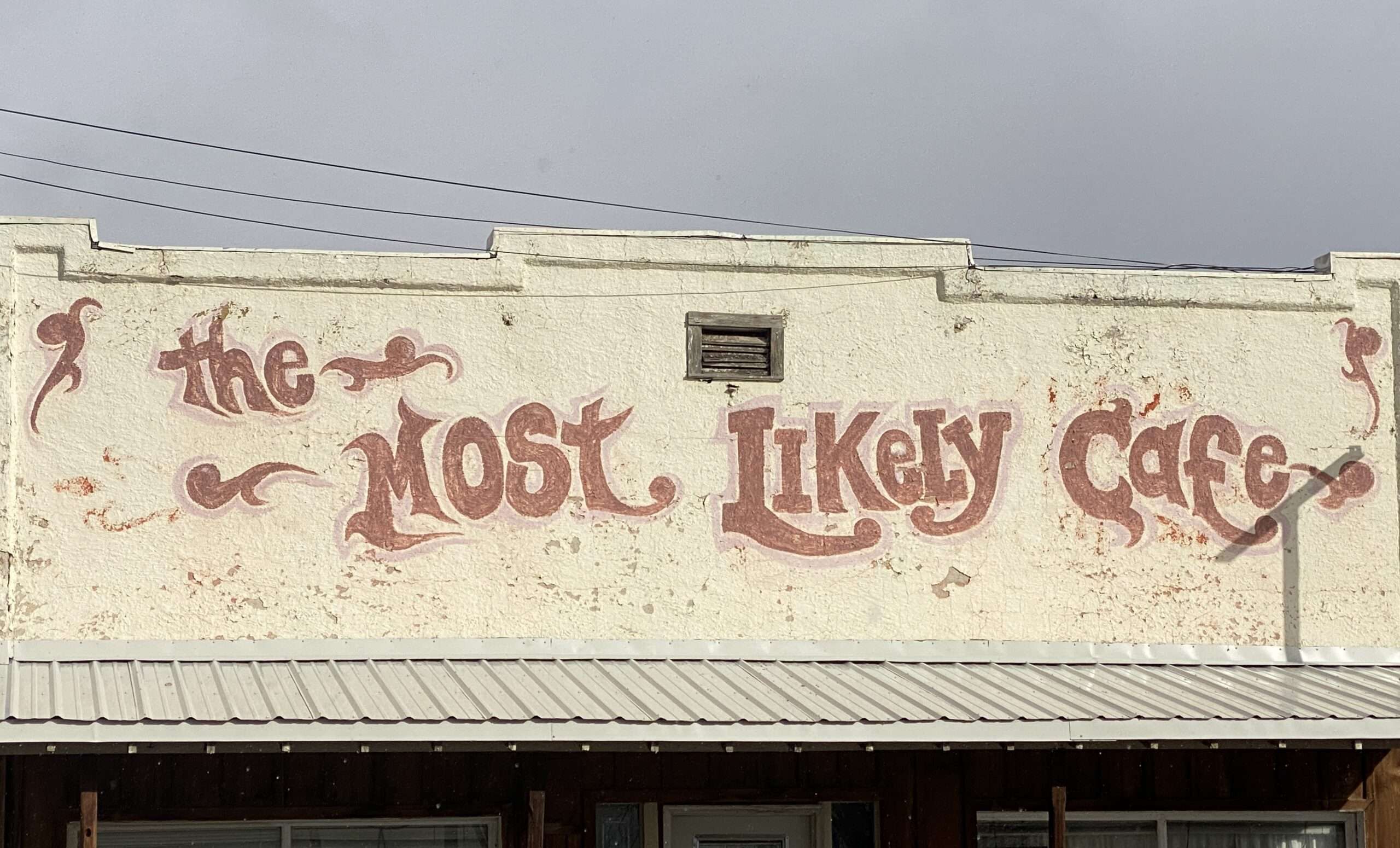
ALTURAS

The N-C-O finally arrived in Alturas. What started as only a whistle-stop became the headquarters for the railway.
Whistle Stop
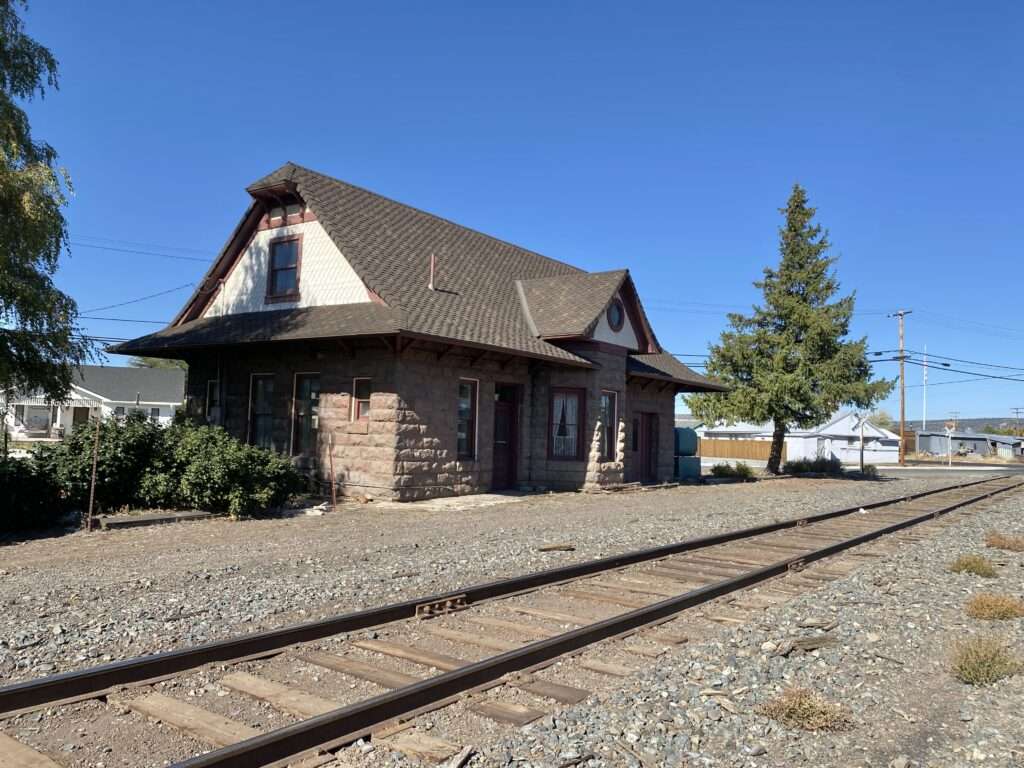
The N-C-O built the Alturas depot, or “whistle stop,” in 1908. In 1915, they moved the depot, stone by stone, to the current location. The depot is now home to the Alturas Garden Club.


N-C-O Headquarters
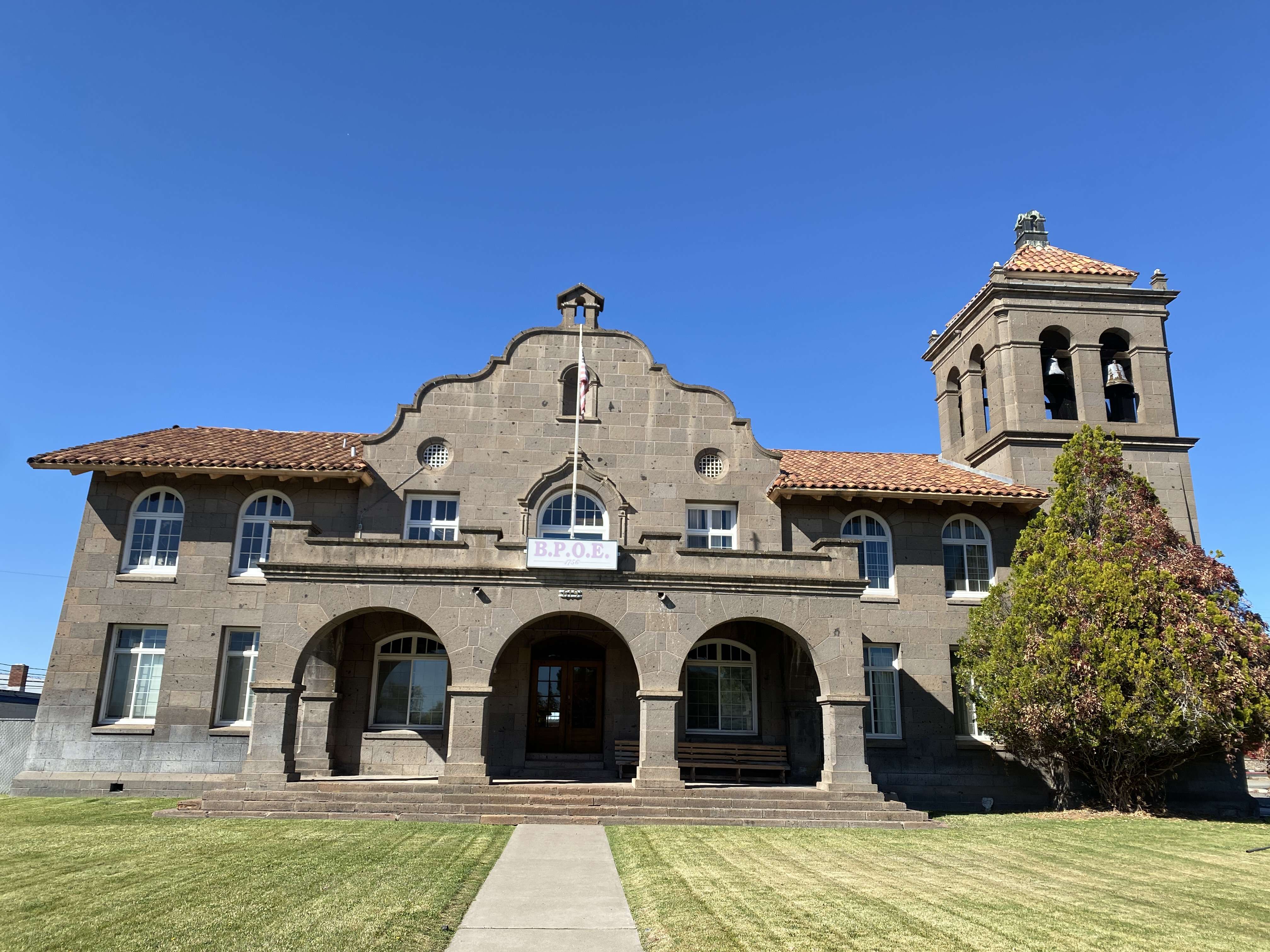
The N-C-O relocated its headquarters to Alturas following the sale of the southern leg of the Western Pacific Railroad. In 1917, they built a large Mission Revival as the office.
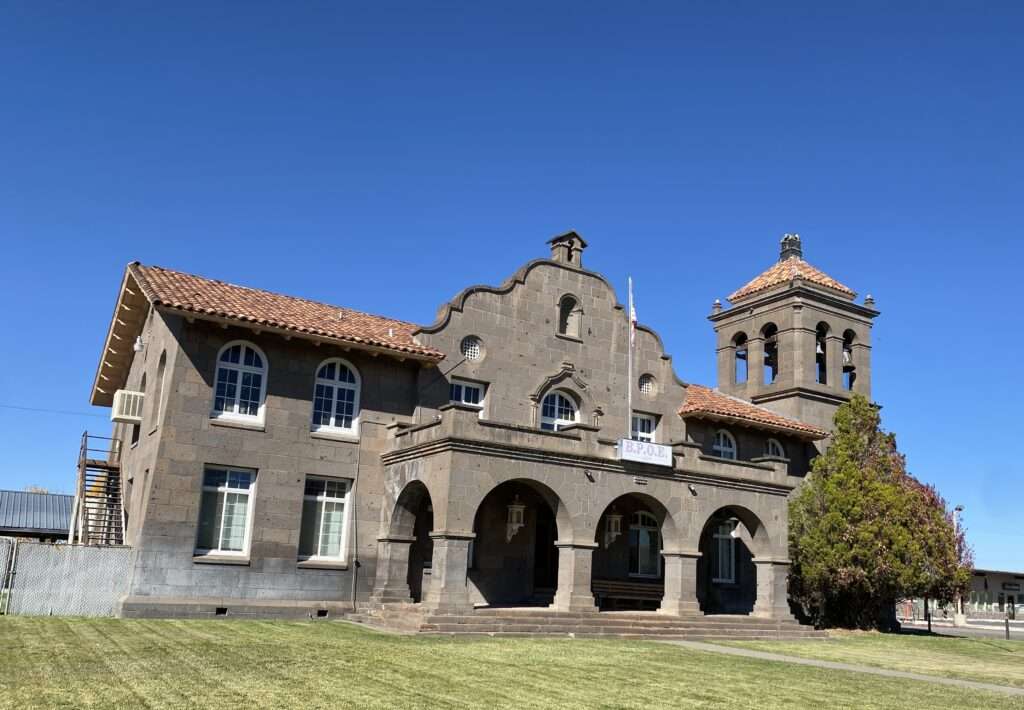
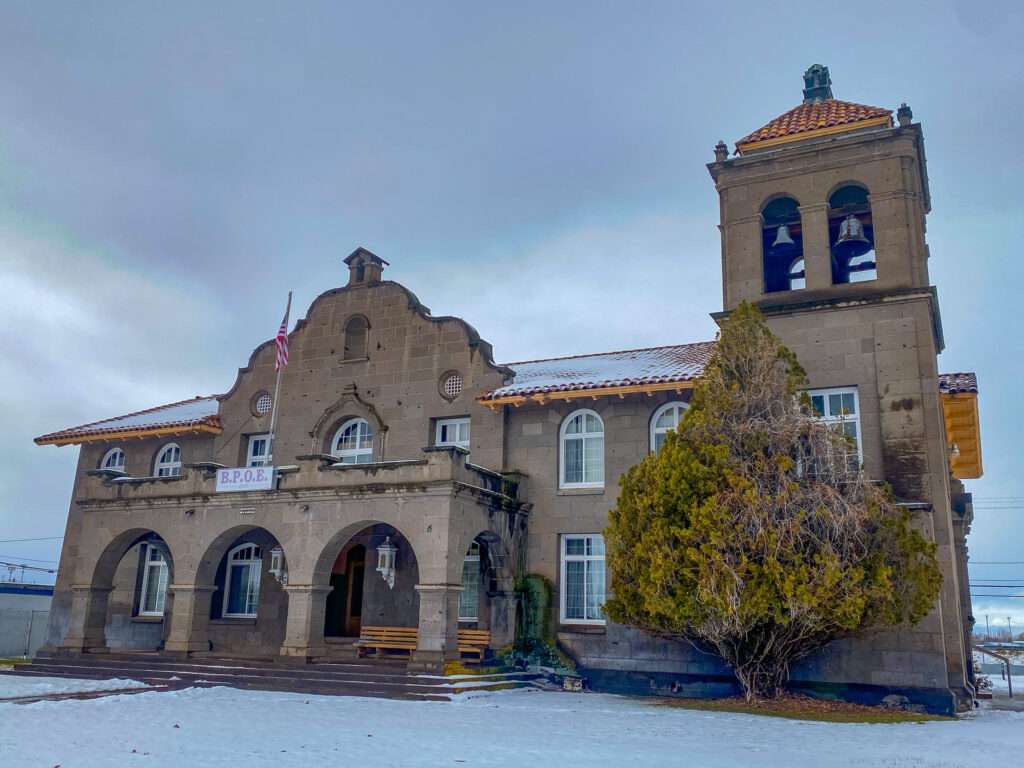
The N.C.O. didn’t have the funds for five bells in the tower. Only one bell was real; the rest were wooden replicas.
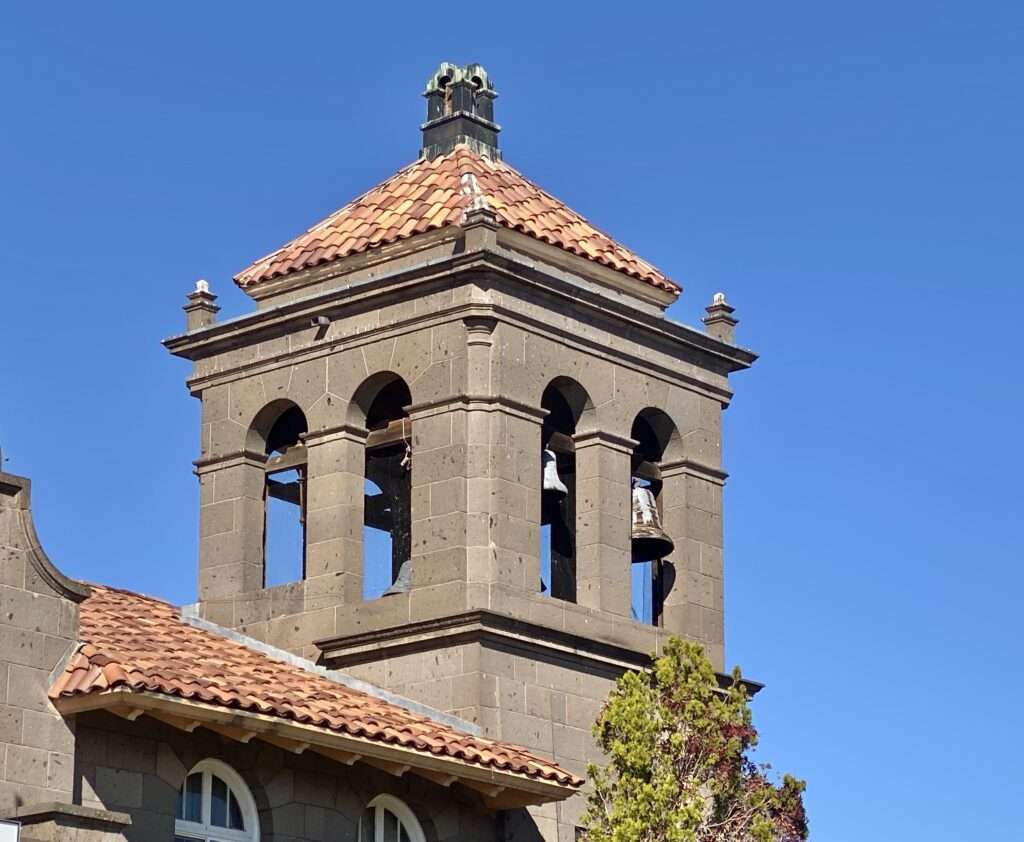
“Railroad Day to be long remembered event”
Alturas planned a large celebration to commemorate Railroad Days, which coincided with Armistice Day, November 11, 1927 (marking the end of WWI). Trainloads of people arrived from Nevada and Sacramento. An estimated 5,000 people attended the event. Six hundred people attended a duck dinner at the town hall. The remainder ate half a ton of beans prepared by Rancher “Doc” Hordon.
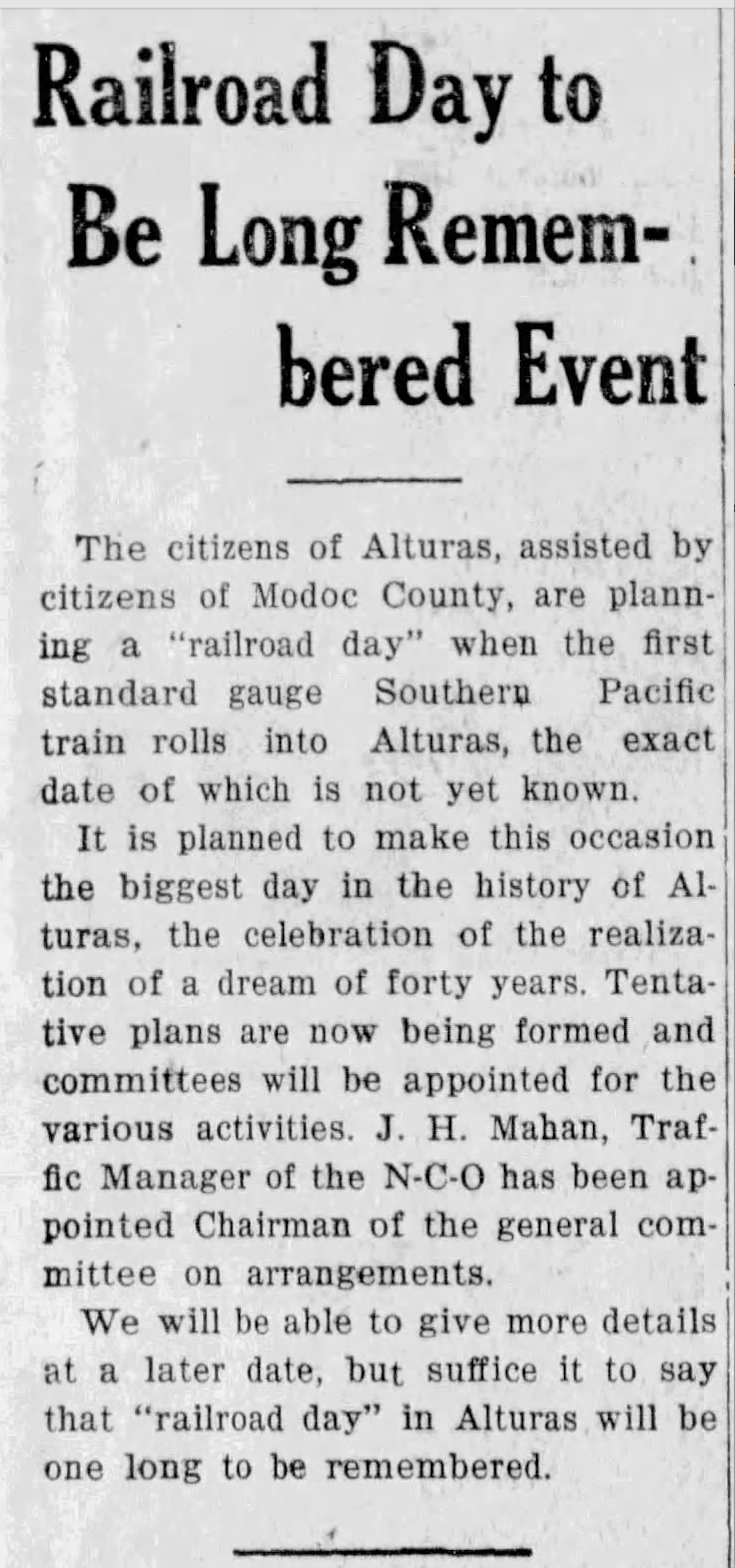
Following dinner, festivities shifted to several dance halls. Soon, the dancers became ill and vacated the dance floors, heading for whatever bathroom facilities they could find.
The returning trains made many unschedules stops, for the restooms were inadquate to the numer of passengers in need. Many visiting dignataries including railroad officials and the governor of Nevada, were to be seen fleeing for the sagebrush.
The Journal of the Modoc County Historical Society. #4, 1982
Several theories abound about the cause of gastric distress. “Doc” Hordon was known for practical jokes and may have been a “disgruntled Southern Pacific employee.” Some accuse Doc of dosing the beans with croton oil, which, even in small doses, causes diarrhea. An alternative theory is that using hot water to clean the buckets for food preparation reacted with the solder and caused intestinal issues.
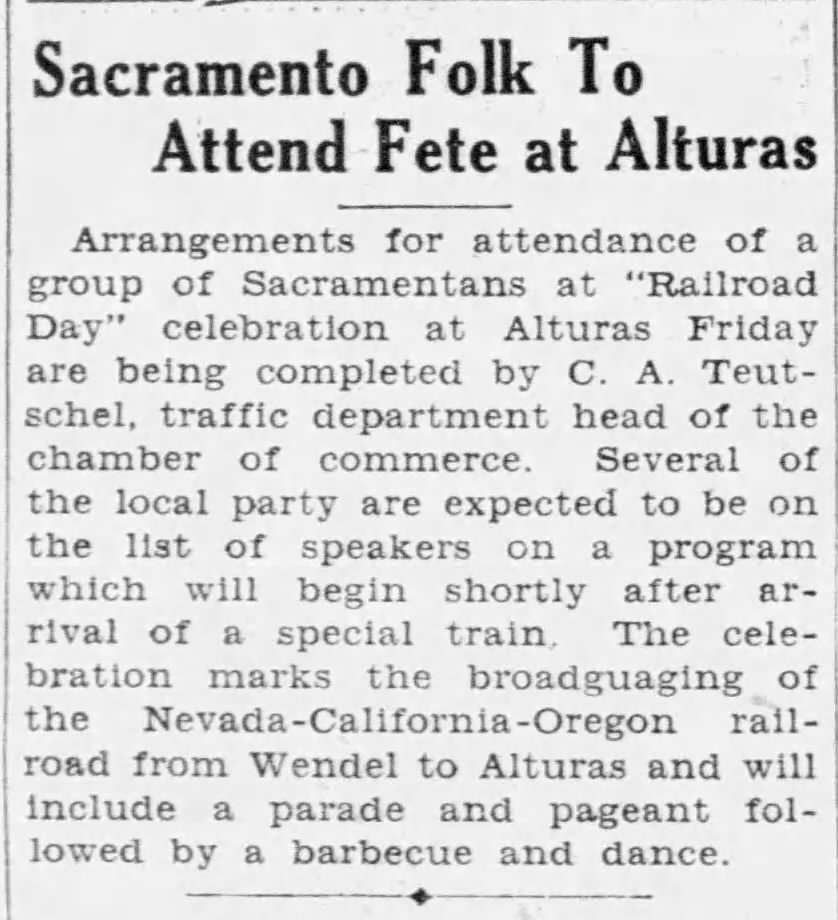
Chimney Rock
The right-of-way north of Alturas was contested and caused slowdowns. The N-C-O addressed the issue by constructing the line on a Sunday when the landowner could not get a court injunction. Problem solved. Residents of Alturas celebrated by taking rides on the construction trains.

(Photo credit: California State University)
Thomas Denson was one of the first non-native settlers in the Pit River Valley. A master craftsman, he built a log cabin around a sandstone pyramid. He carved a chimney into the rock. His cabin was completed in 1871 and was the second building in the Pit River Valley.
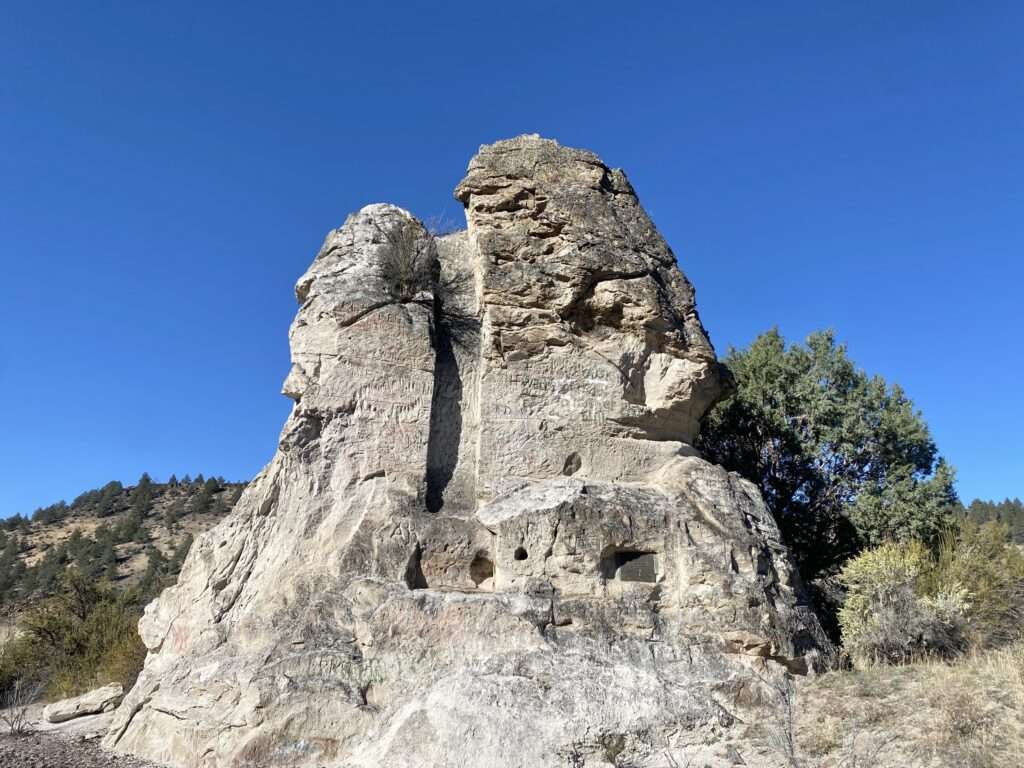
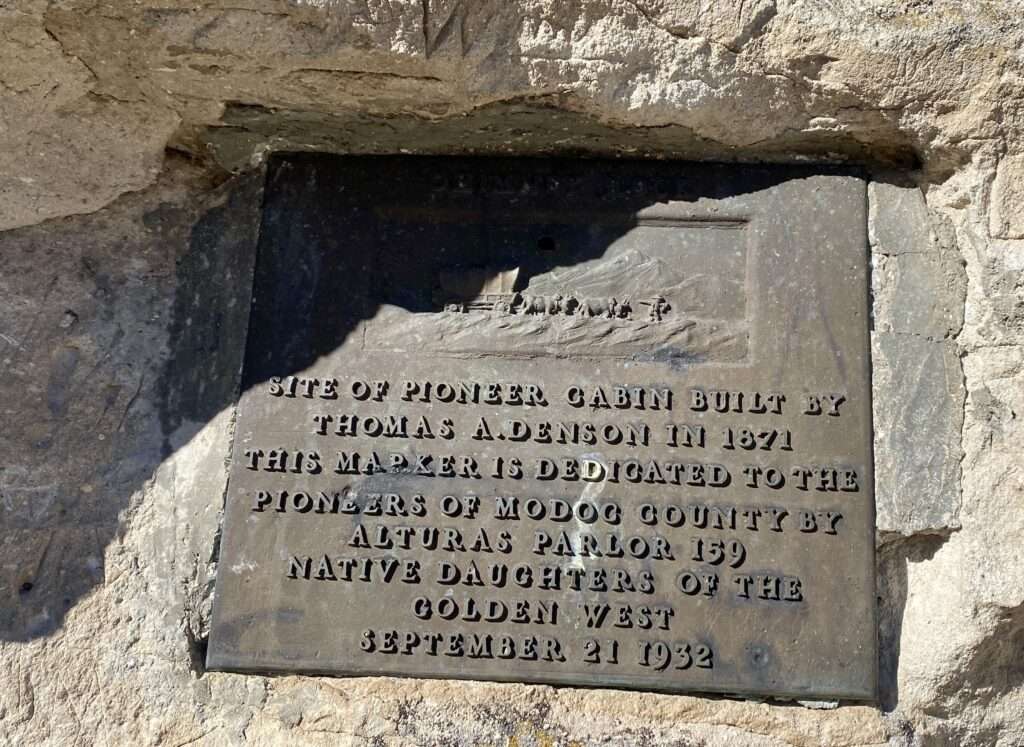
The cabin’s fate is unknown, but some speculate the N-C-O removed it to continue their progress.
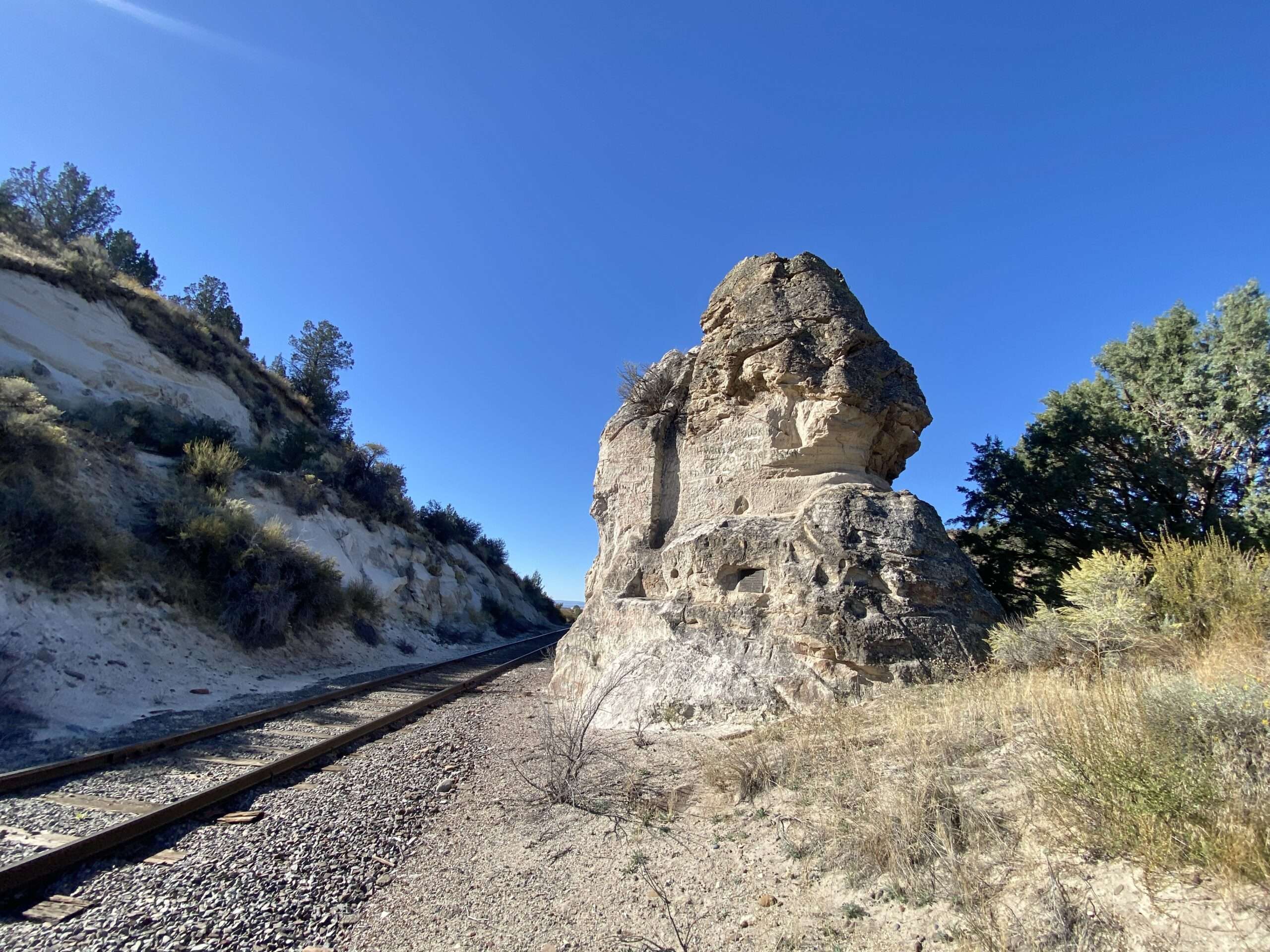
DAVIS CREEK
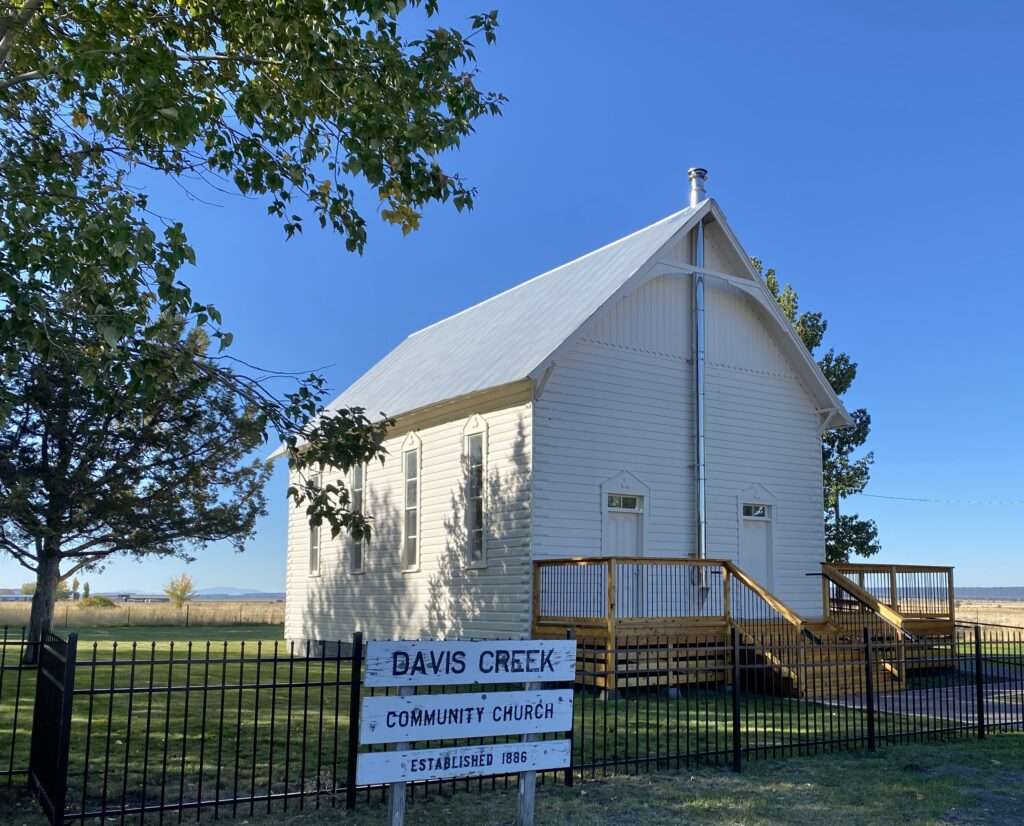
A log cabin began Davis Creek in 1869, and the first post office opened ten years later. At one time, the town sat on the southern edge of Goose Lake. A ferry transported cargo and passengers to Lakeview, Oregon at the north end of the lake.
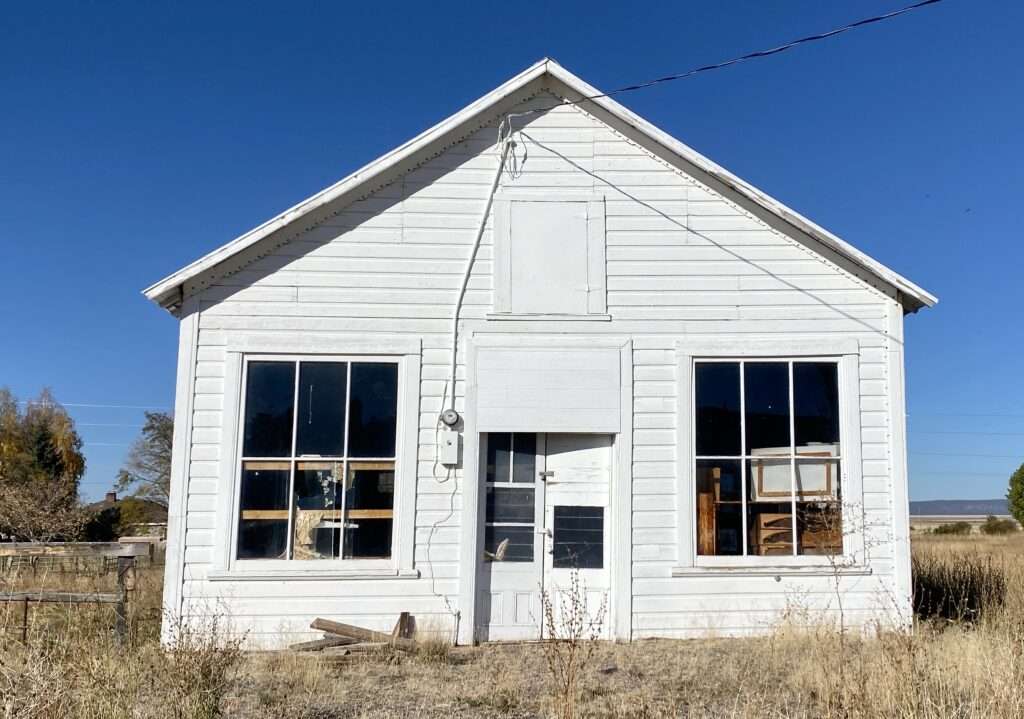
The N-C-O arrived at Davis Creek in 1911, and the ferry was discontinued.
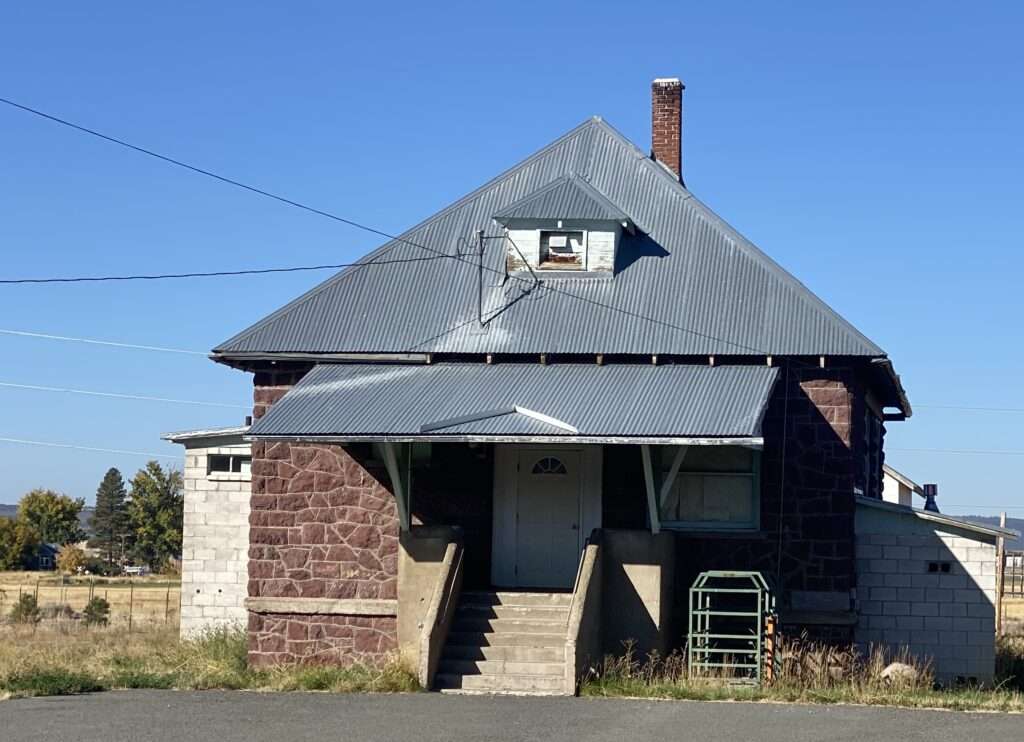
The realignment of Highway 395 in the early 1960s bypassed the business section of town.
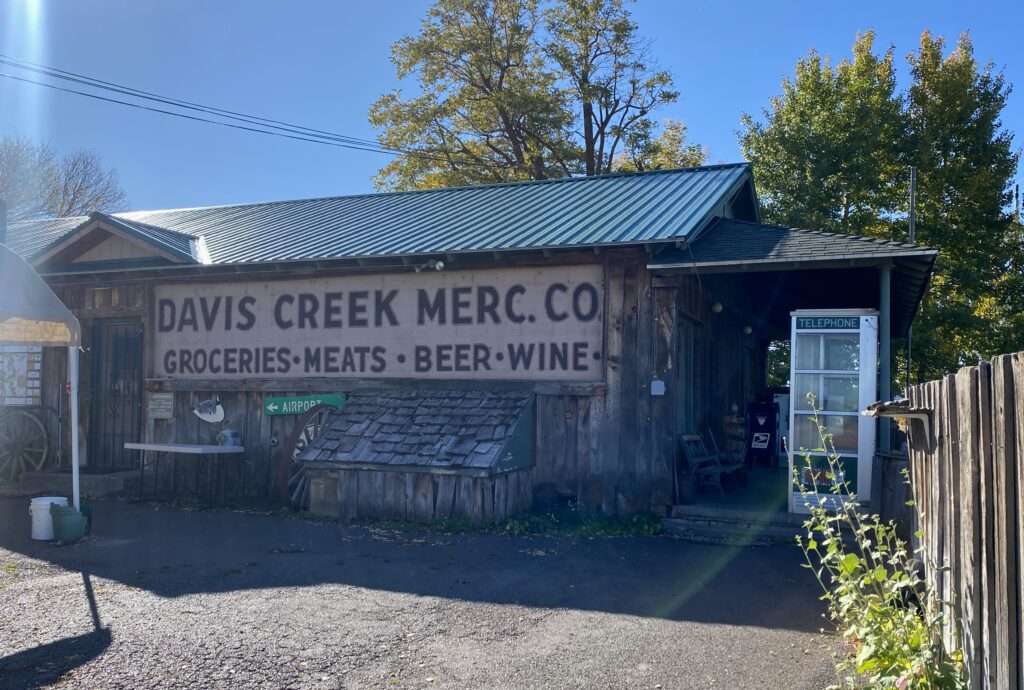
Willow Ranch

The Crane Creek and Willow Ranch Lumber Companies operated between 1929 and 1959. Crane Creek was the first lumber mill to operate in Modoc Forest. In 1926, they produced 194 million board feet for the Fandango Logging Unit. They had a standard gauge railroad connected to the N-C-O to transport lumber.
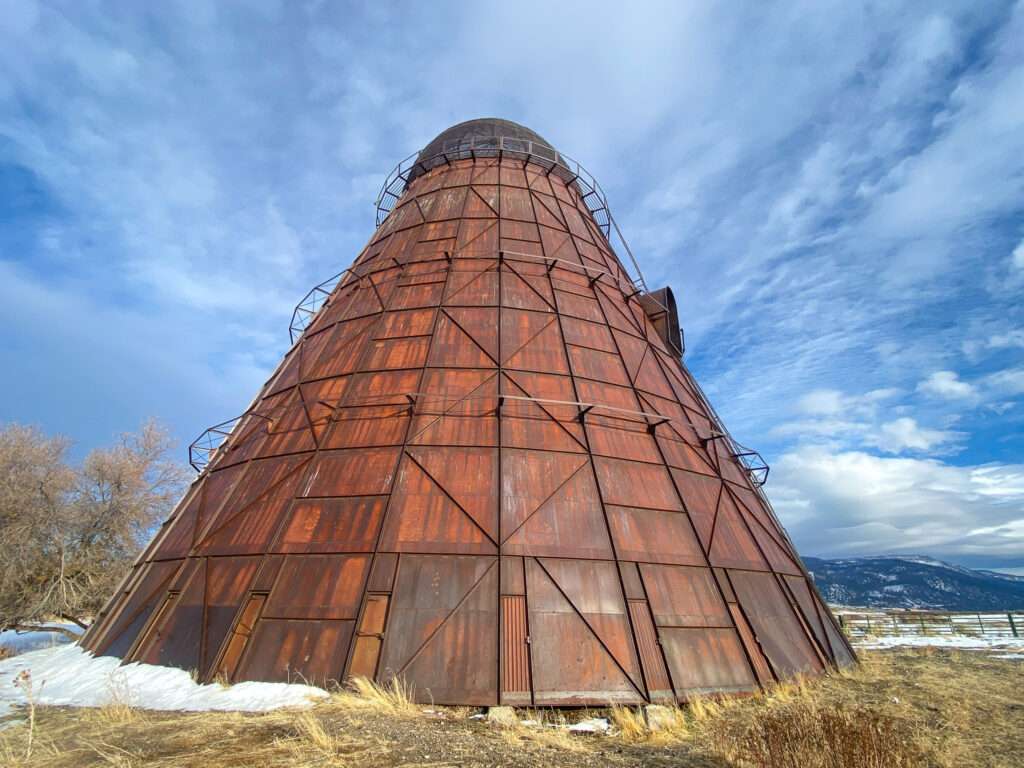

(Photo credit: CSU)
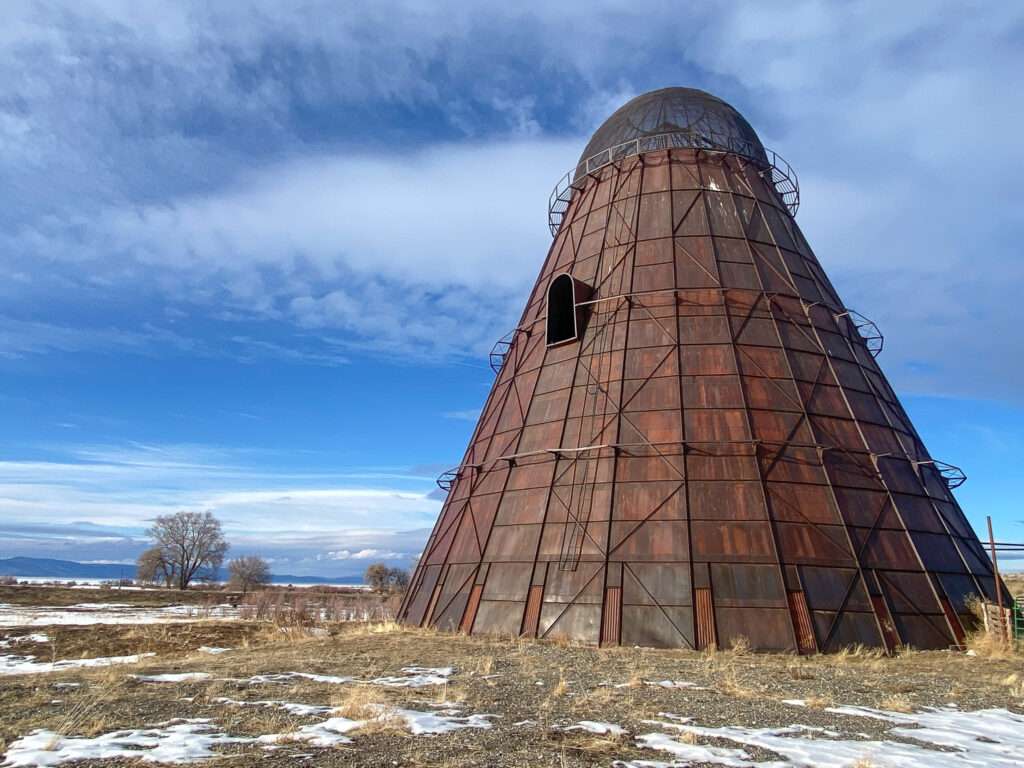
Willow Ranch Lumber Company was operating in the 1940s. Loggers cut timber on the west side of Goose Lake and transported to the mill via ferry. On a good day, the journey took five hours. The boats were 26′ by 8′ and had metal teeth at the front and rear to protect the craft.
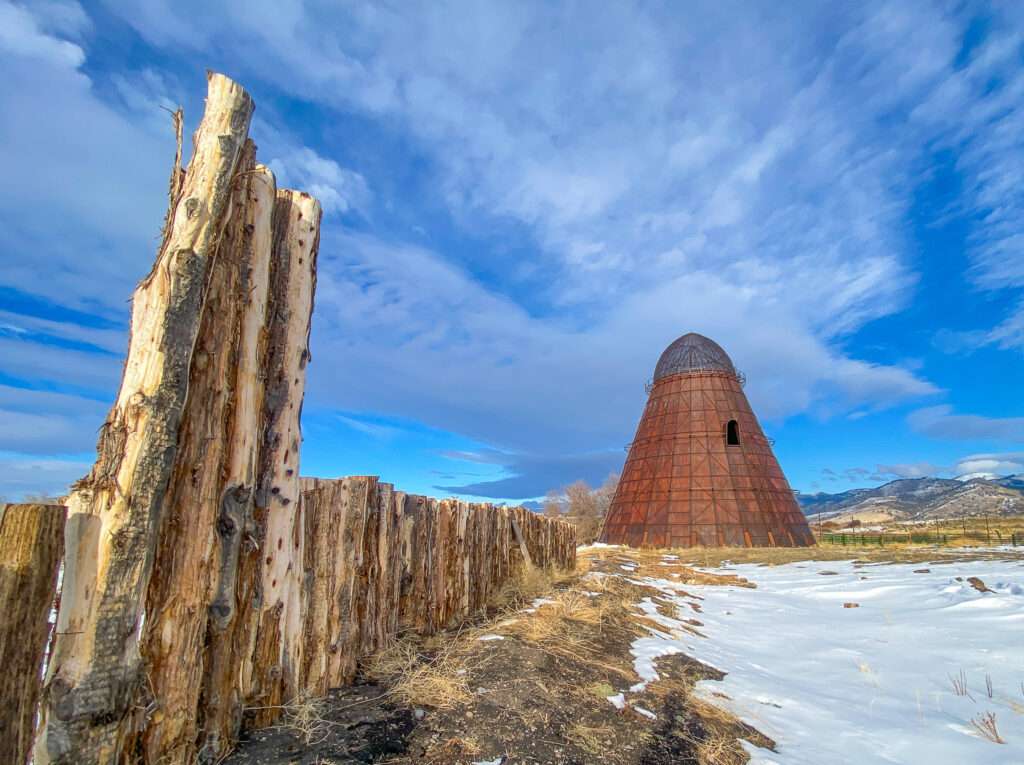
The remaining structure is a sawdust burner, also called a wigwam, teepee, or beehive burner. Wood waste was loaded into the opening and fell to a furnace below. Due to environmental concerns, Most burners went offline in the 1970s.
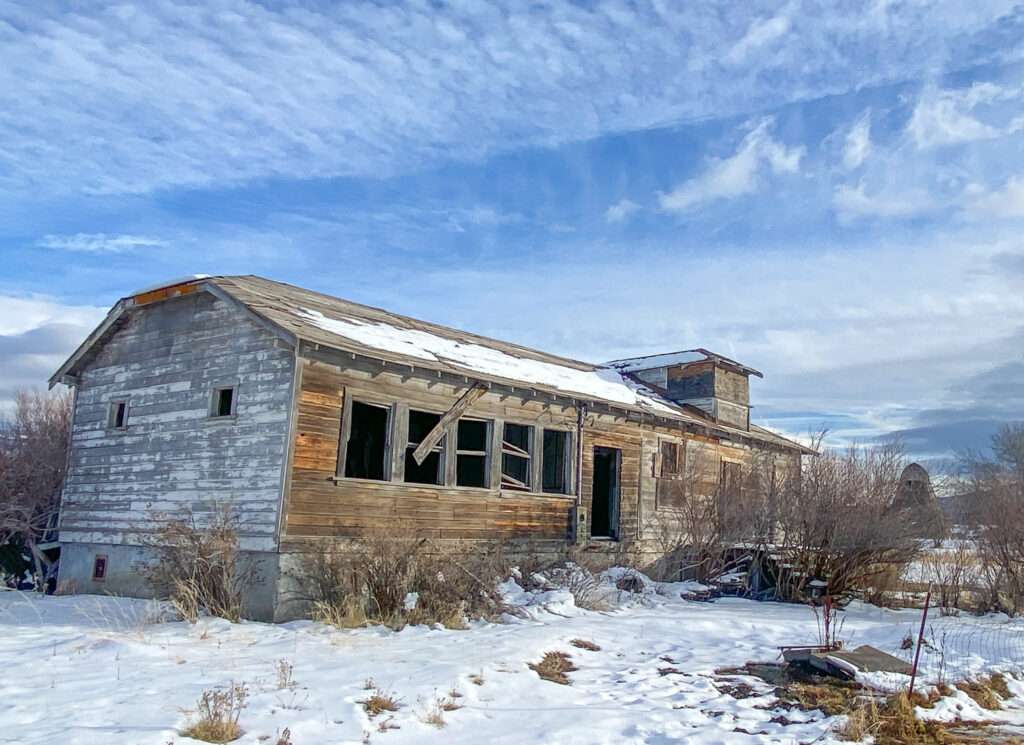
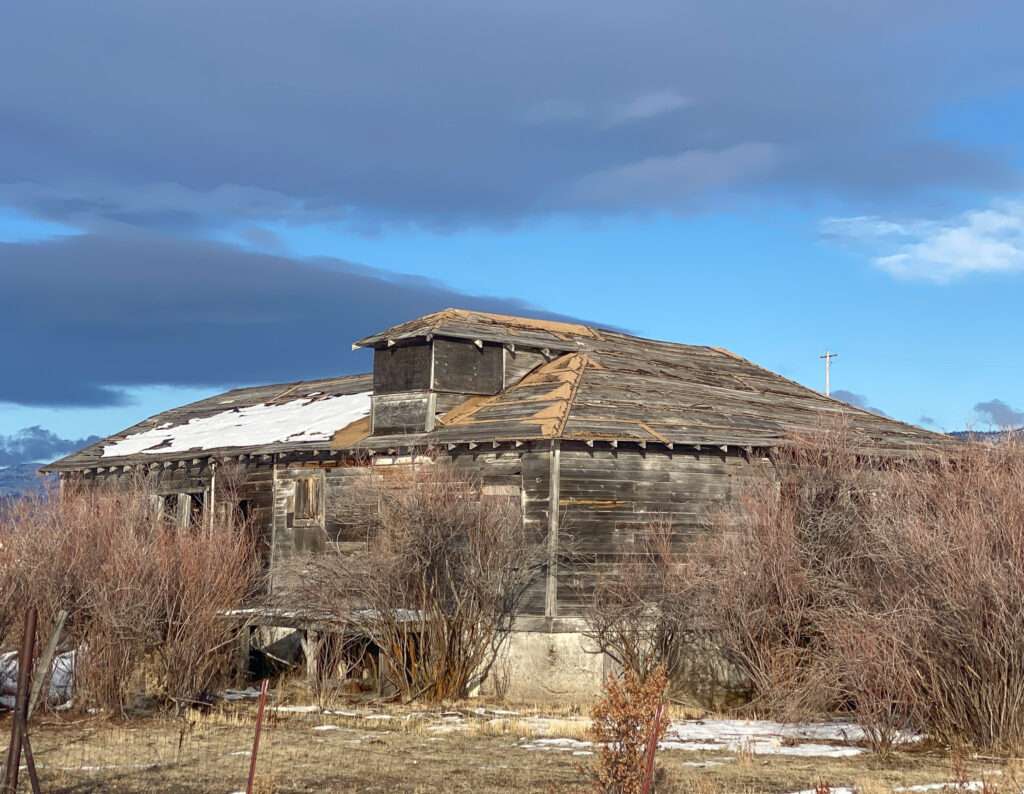
New Pine Creek: California, or is it Oregon?

(Photo Credit: New Pine Creek History)
The first stop once the N-C-O left California was New Pine Creek. The town started as Pine Creek. Once settlers discovered another Pine Creek while applying for a post office in 1876, they threw “New” into the name.

A surveying mistake led to confusion. Like Aurora and Sylvania, it was unclear which state New Pine Creek was located. The post office is on the Oregon side, so California residents have Oregon addresses, causing issues at places like the DMV.
LAKEVIEW N-C-O TERMINAL
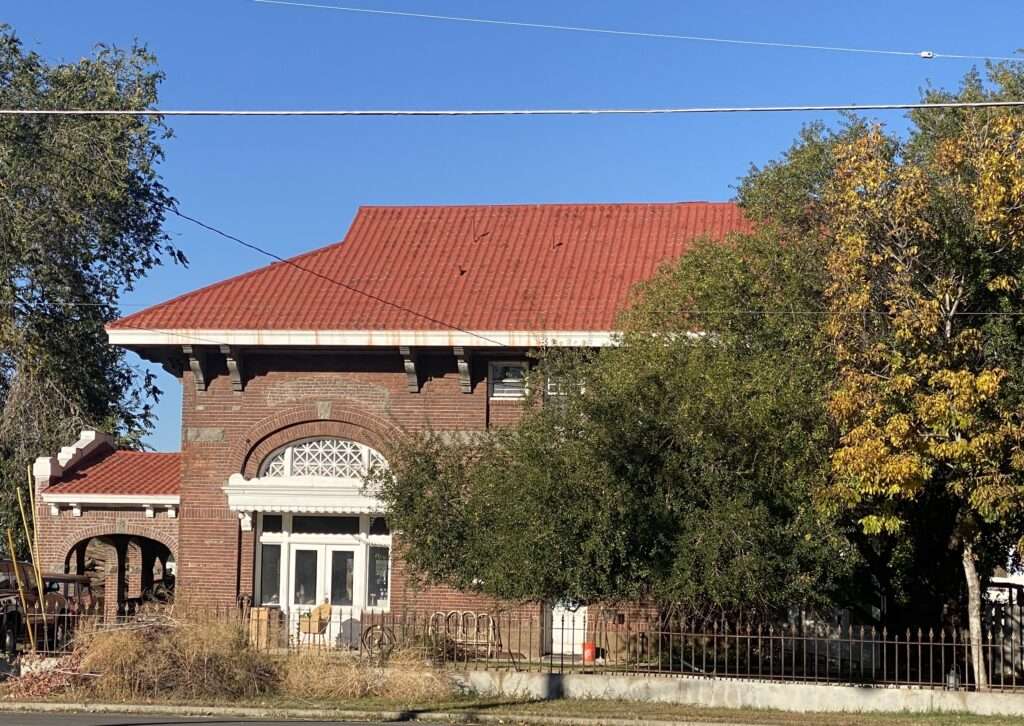
The N-C-O used the Lakeview terminal for passengers and freight. The Southern Pacific Railroad purchased the depot in the 1920s. In 1982, private owners purchased the property.
Lakeview Depot
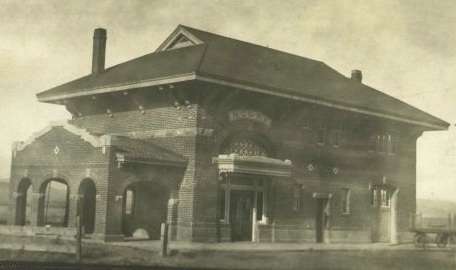
(Photo credit: Wikipedia)
Nevda’s famous architect, Frederic DeLongchamps, designed the Lakeview N-C-O depot, which was constructed in 1910. The depot cost $15,000, making it the third most expensive building in Lakeview.
In 1928 the Southern Pacific Railroad purchased the depot. It continued as a passenger service until 1937 and a freight service unit until 1975. In 1982, private owners purchased the property.
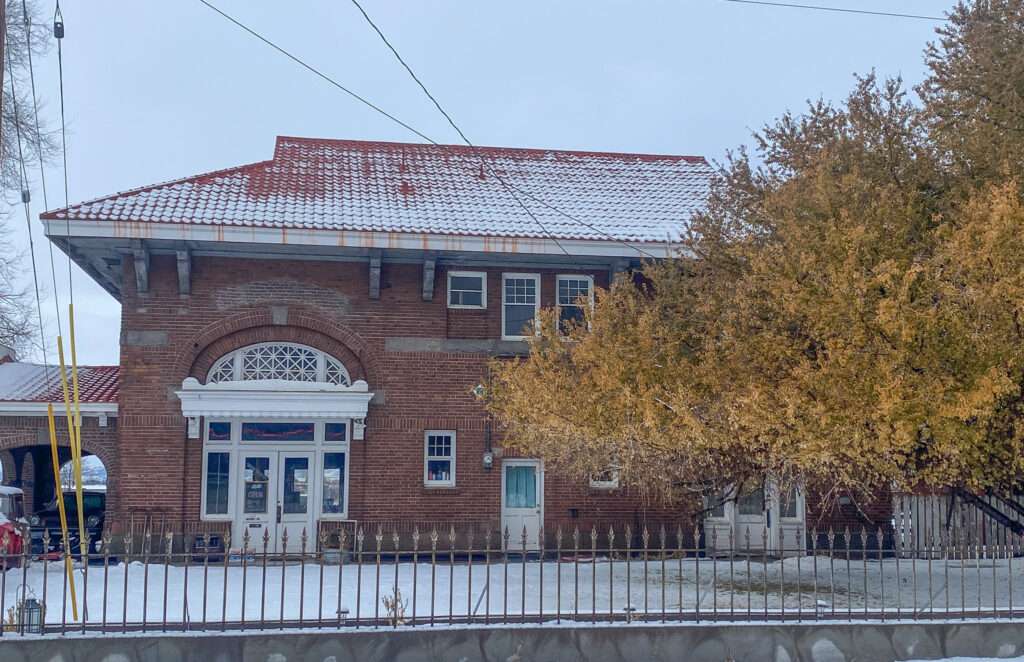

The Nevada, California & Oregon Railway Historical Society

The N-C-O-Ry is a historical non-profit working to preserve the history of the N-C-O Railway. Donations and memberships help this great group. You can find them at ncory.org.
WANT MORE GHOST TOWNS?
For information on more than five hundred ghost towns in Nevada & California, visit the Nevada Ghost Towns Map or a list of Nevada ghost towns.
Learn about how to visit ghost towns safely.

References
References
- Field Trip: The Nevada-California-Oregon Railway
- Journal of the Modoc County Historical Society. Number 4, 1982.
- Myric, David F. Railroads of Nevada and Eastern California: Volume 1. University of Nevada Press, 1990. Pages 340-383.
- Sparks Museum and Cultural Center: Narrow, Crooked and Onery!
- Wikipedia: Lakeview Station (Oregon)
- Wikipedia: Nevada, California, Oregon Railway
- Wikipedia: Nevada, California, Oregon Railway Depot
Barbara says
Great write up! Elk like to rest on the lawn in the shade of the Alturas Depot on hot summer days.
Tami says
That would be amazing to see!
John Wrobel says
This one looks like it was a lot of fun exploring the various towns and routes.
Thank you for posting about the many trips you make.
Tami says
It took a few trips, but all were great. I’d like to find the other stations stops but that would take some digging to find the lesser known sites.
Ken Angst says
Tami,
Fantastic job. Good to see that you have access to Railroads of Nevada and Eastern California. VOL I. It it is a great reference work. Now up to three volumes. A must have along with The History of Nevada, 1881.
Thanks for the great work.
Tami says
Excellent book and I have all 3 volumes. It is invaluable with trains, but also ghost towns.
bob hansen says
Thank you for another excellent article Tami.
Tami says
Thank you, this one turned into a book but is one of my favorties.
Jeff Johnson says
There is notch in the hill above 395, behind the trailer park and a patch on the other end of Panther Valley, the top of Golden Valley, Military Road, then it appears North of the Airport. It crossed Red Rock Road by the Buddhist Temple. You can drive on it the back way to Cold Springs through Summit and Cold Springs Station.
Tami says
Is that the route with the mine, ore bin and chute?
Tom Chism says
I did a portion of my growing up years living in the house that was built for the director of the NC&O Railroad. It was located on Main St in Alturas just south of old headquarters, and roughly across Main St. from the station.. At the time I lived there the house was then the parsonage for the First Baptist Church, The house was a hulk, drafty and creaky. Modoc County Health Dept. now sits on the lot where the house was located. It’s nice to see the old pictures, some things don’t change.
Tami says
What cool memories, it is too bad it is gone. They did a nice job remodeling the other house and keeping the historical characteristics.
Chuck says
Damn, I love seeing your emails come across my computer screen… I love Nevada history….
Tami says
Thank you so much, that made my day!
Steve Whitehorn says
Tami, your research for this post is second to none. This route and the pictures bring back so many memories for me working for the local phone company Citizens Utilities. The company provided communications along the entire RR route in California, so all the little towns you mentioned were common stops for me over my employment years. Also the historic picture of Susanville with the Elks lodge at the end of main street visible is special for the time period. { It is for sale by the way}. The headquarters in Alturas also being an Elks lodge is worth stopping for a refreshment. Lisa and I need to visit the depot in Reno next time we pass through to check out what it has turned into. Thank you so much for this pictures, especially the teepee burner!
Tami says
How fascinating! I didn’t know the lodge was for sale.
I need to revisit The Depot. it was a fun stop for a bite to eat and a great drink. The teepee burner is my favorite! I grew up seeing them but so many are gone.
Roger Peterson says
I love your trips and history of Nevada. I like to read them after dinner and try to put myself in some of the places you take us to. My Great Grandfather lived from 1854 to 1934 and I think it was a great time to be alive. I was born
just 100 years too late.
Tami says
Thank you, that means so much to me.
Bill Hale says
Great article Tami, Well researched and great detail considering the space you have. I enjoy all of your articles, and always look forward to the next one. I appreciate your commitment to publishing your articles about the great state of Nevada.
Tami says
Thanks you, your comments are very appreciated today.
Hans H Feickert says
Thanks Tami…A Great article again.
I thought for a bit you would overlook Ravendale…it is easy to do. While doing archeological survey for the California State Land Commission in the area, I stopped there once for gas about 1980. The “station” had one old pump with the glass tank on top that was manually operated by a lever! Why upgrade if you don’t have any customers?
Tami says
I’m glad you enjoyed the article. There are more stops I’d love to visit but many don’t have much left.
What area were you surveying? The gas tank sounds amazing! Now I would love a few gas stations along that route. It is fine in my Grand Cherokee, not so much in the Rubicon.
Bryan Engebritson says
I called your bluff and Googled Foamers. And come to find out I’m a boarder line foamer, but only to Pre 1900 Trains. Great post as always